Samsung Q80D is a very versatile television. It is certainly a device that can easily adapt to the needs of both gamers and those looking for equipment for everyday viewing. When it comes to the former – that is, gamers – the support for HDMI 2.1, 120 Hz refresh rate, and low input lag make playing on a console or PC pure pleasure. Additionally, the Game Bar feature allows quick changes to settings without the hassle of leaving the game – a small thing, but it makes a difference. It's also worth mentioning the fantastic feature of an efficiently working motion smoother that operates well in games. We get the impression that playing on such a television adds us a few FPS, which translates to an advantage in the game. During everyday use, the Q80D also performs very well. The Tizen system offers access to popular applications like Netflix, Prime Video, and Disney+, so nothing is lacking here. The high brightness of the screen ensures that the television performs excellently even in well-lit rooms. A nice and interesting addition is the solar remote, which not only does not require battery replacement but also allows you to control other devices (e.g., set-top boxes, consoles, soundbars). When it comes to picture quality, the Q80D has a lot to offer. Although it lacks Dolby Vision support, after calibration, the colours look great, and the contrast and black level thanks to FALD (full-array local dimming) have made a huge impression on us, especially considering the television segment. With a VA panel enhanced with quantum dots (QLED), the colours on the Q80D can look truly splendid. Watching movies or series in the evening is a real pleasure – particularly if we care about good detail. However, there are little things that might be bothersome. The lack of a recording feature is certainly a limitation, although it may not be a problem for everyone. Another obvious issue will be its viewing angles. These are typical results for this type of panel, so one must reckon that at the expense of great blacks, the Q80D simply performs average when viewed from the side. Nevertheless, Samsung Q80D is an excellent television that works well in any situation. It offers outstanding picture quality, many useful features, and solid build quality for its price range. A few minor shortcomings do not take away from its charm, as overall it is a model that will comfortably meet the expectations of most users – both those who game on a console and those who simply enjoy evening screenings with good image quality.
- Matching (Score)
- Our verdict
- TV appearance
- Where to buy
- Contrast and black detail
- HDR effect quality
- Factory color reproduction
- Color reproduction after calibration
- Smoothness of tonal transitions
- Image scaling and smoothness of tonal transitions
- Blur and motion smoothness
- Console compatibility and gaming features
- Input lag
- Compatibility with PC
- Viewing angles
- TV efficiency during daytime
- Details about the matrix
- TV features
- Apps
- Playing files from USB
- Sound
Samsung QLED Q80D vs Samsung QN80F
Direct compare
Q80D
QN80F

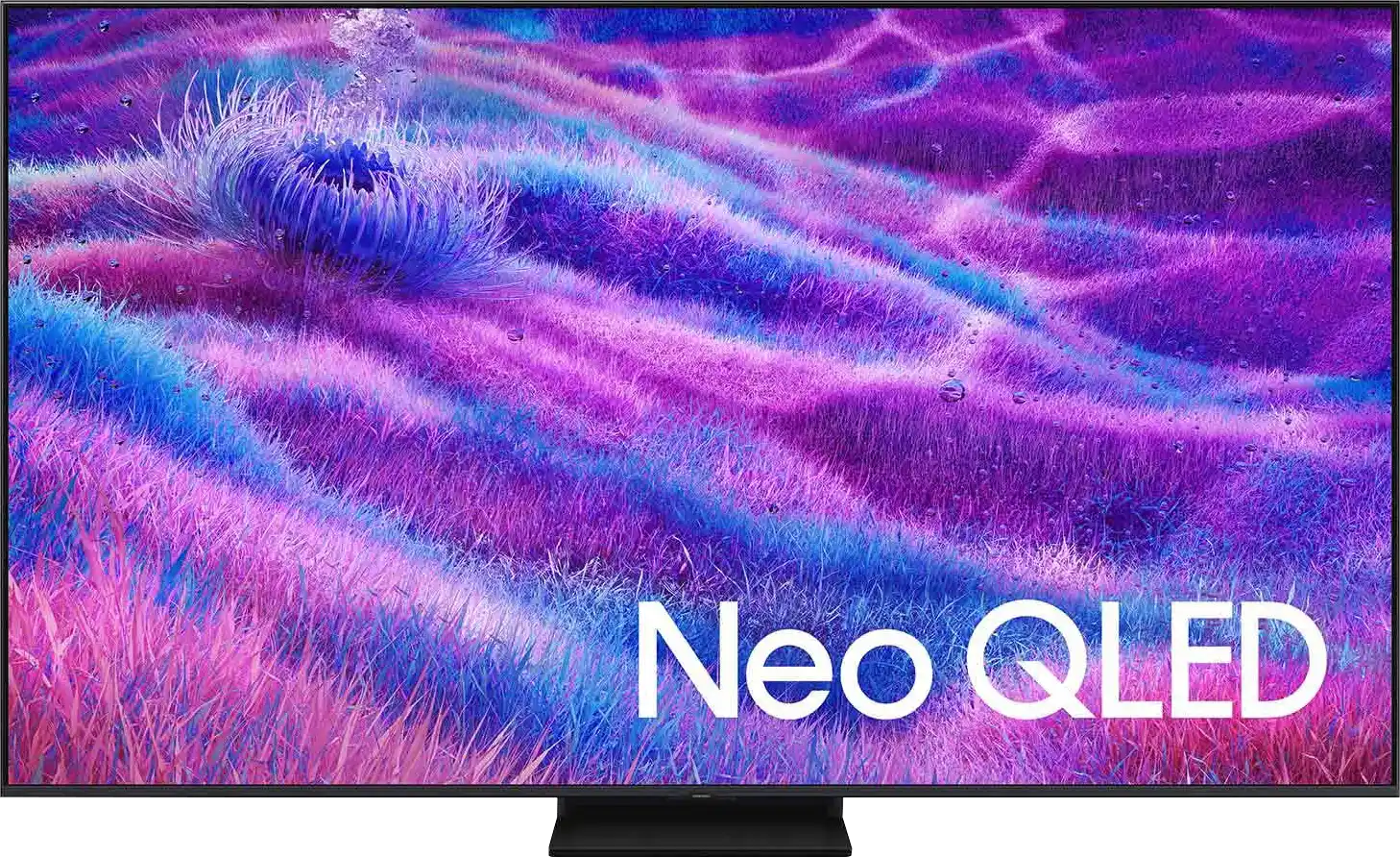
Panel type: LCD VA
Resolution: 3840x2160
System: Tizen
Model year: 2024
Complete the survey to find out the result

Panel type: LCD VA
Resolution: 3840x2160
System: Tizen
Model year: 2025
Complete the survey to find out the result

Overall rating
7.1
7.3
Movies and series in UHD quality
6.8
6.9
Classic TV, YouTube
6.7
6.8
Sports broadcasts (TV and apps)
6.6
6.7
Gaming on console
8.7
8.5
TV as a computer monitor
7.6
8.8
Watching in bright light
6.0
6.6
Utility functions
7.7
7.5
Apps
8.7
8.7
Sound quality
6.6
6.7
Complete the survey to find out what fits your preferences
Advantages
Great choice for gamers - lots of features, low input lag, 120Hz
High brightness of the panel - good performance during the day
Good black levels and contrast - VA panel with local dimming
Excellent tonal transitions
Advanced smart system "Tizen"
Pleasant sound from the built-in speakers
Impressive blacks and contrast - VA panel combined with MINI-LED backlighting.
Great brightness - up to 1000 nits in HDR
Fast and responsive panel - 144 Hz
Rich support for gamers - 4xHDMI 2.1, VRR, ALLM, GameBar, Game Motion Plus
Very good usability in daylight
Advanced Tizen operating system
Simple operation
PiP function
Disadvantages
Average viewing angles
No recording function
No DTS (may hinder connection to home cinema)
No support for DTS format – a limitation when connecting a home cinema
No recording function to USB
Relatively few dimming zones
Issues with the HGiG function (for gamers) – the update removed this option*
Our verdict
The QN80F is the first "eighty" from Samsung to enter the series of televisions with Mini LED backlighting. And it does this very well. Although the number of dimming zones isn't particularly impressive, the quality of black levels is solid, and combined with high brightness, it allows for a very decent picture in HDR content. Additionally, there's a 144Hz panel that ensures excellent motion fluidity, and the set of gaming features – VRR, ALLM, Game Motion Plus – makes the QN80F a model practically designed for those gaming on consoles or PC. The television operates quickly and responsively, and the Tizen system runs like lightning – whether you're searching for apps or switching sources. Is there anything to criticise? Of course, as always – there are shortcomings in the system (like USB recording), there's no DTS support, and Mini LED isn't without its limitations. But the QN80F is a fantastic television for everyday use – versatile, refined, and... with great pricing potential. Because looking at the history of this series, we can expect that this "eighty" will mix things up significantly once it hits the first sensible promotions. At that point, it could be virtually unmatched in its price range – especially if Samsung resolves the minor teething issues.
TV appearance




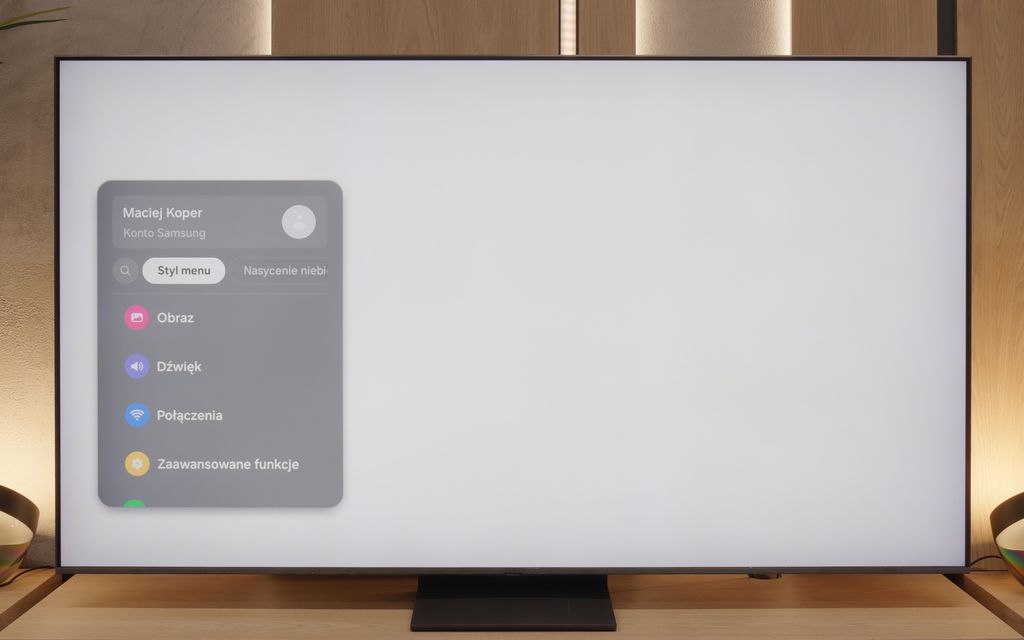
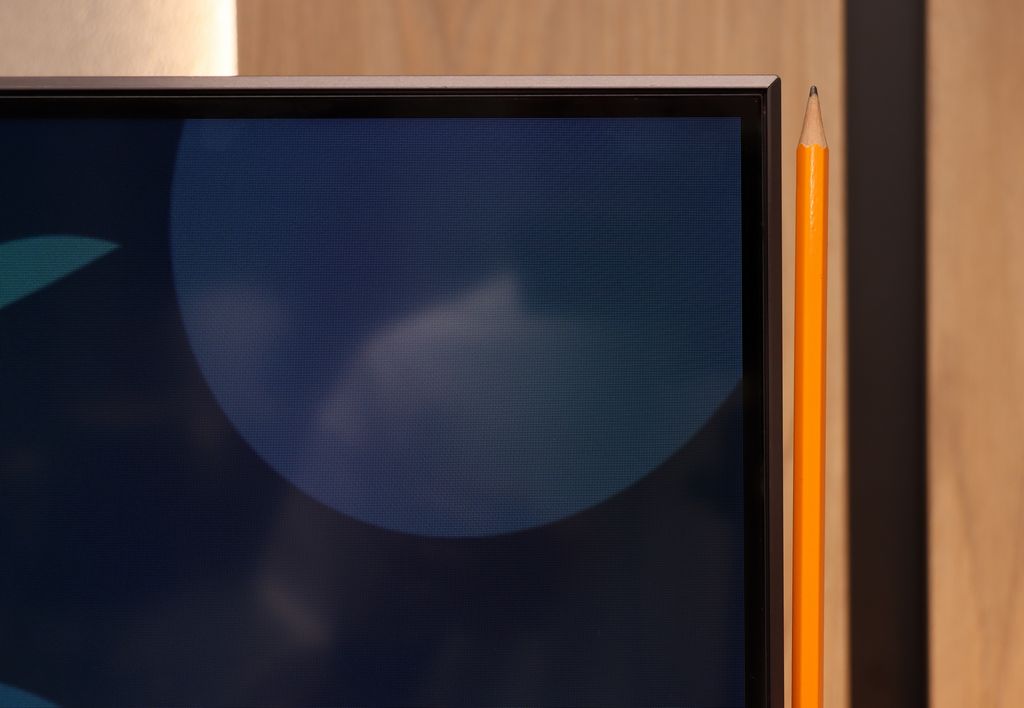
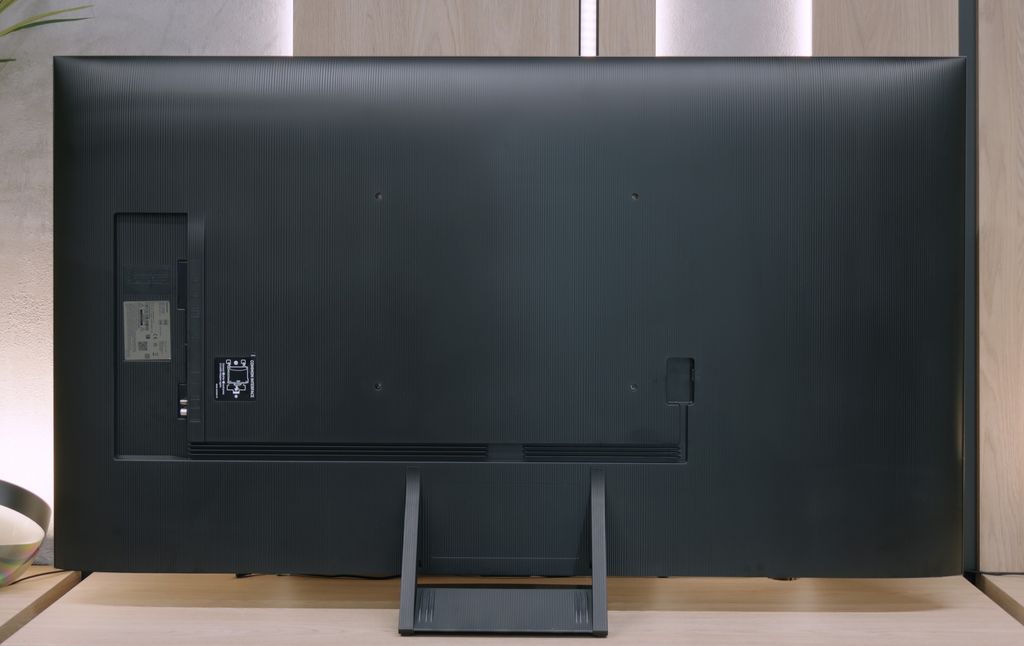

Contrast and black detail
6.7/10
6.8/10
Local dimming function: Yes, number of zones: 100 (10 x 10)
Local dimming function: Yes, number of zones: 88 (8 x 11)
Contrast:

Result
37,350:1

Result
8,850:1

Result
20,350:1

Result
4,300:1

Result
3,800:1

Result
34,100:1

Result
8,200:1

Result
32,500:1

Result
4,550:1

Result
3,800:1
Halo effect and black detail visibility:

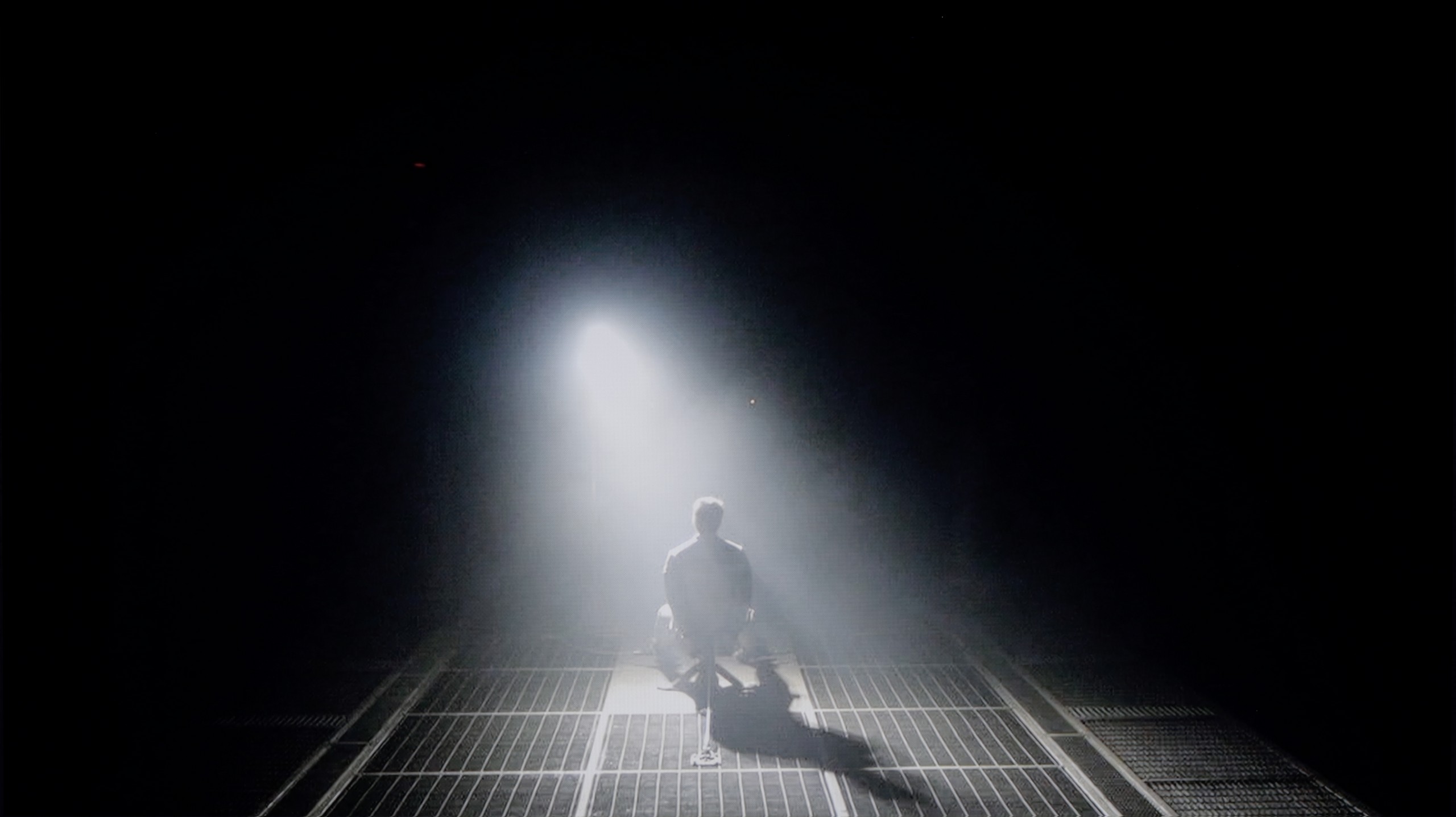
The Samsung Q80D television is equipped with a VA panel, which immediately affects the difference in contrast and black reproduction compared to IPS panels. VA panels offer significantly better contrast and deeper blacks, while IPS panels feature better viewing angles but worse contrast. In the case of the 55" model, the television has 100 local dimming zones, and it's worth noting that this number may vary depending on the screen size. Thanks to local dimming, blacks appear well, but it's important to mention that the algorithm of this technology combined with the limited number of zones can sometimes "go crazy". Bright objects may be dimmed to achieve better blacks. During a test scene from the film Oblivion, the lights blended into a single spot, regardless of the dimming settings, highlighting the limitations of this technology. In the film Sicario 2, large dimming zones were particularly noticeable, for example, with the small lights of a helicopter, indicating how large the areas controlled by a single dimming zone are. Despite these imperfections, local dimming technology still offers significantly better image quality than televisions without this feature or with edge lighting. With the ability to completely turn off individual zones, the television can provide a noticeable boost in brightness in selected areas, which can give the image a cinematic effect, especially in dark rooms.
QN80F is a representative of the Neo QLED series, meaning it is a television with Mini LED backlighting. Unlike its cheaper cousin, the QN70F model, the diodes here are placed directly behind the panel (rather than at the edges), which gives it a solid advantage right from the start when it comes to contrast control. In the 65-inch variant we tested, we counted 88 dimming zones – a result that may not be particularly impressive, but as it turned out, sufficient to achieve quite decent results.
In tests based on scenes from films such as Oblivion and The Meg, the QN80F performed well – blacks were deep, and the overall image consistency was visually appealing. However, in more demanding moments (e.g., scenes with a large number of bright details on a dark background), a halo effect appeared. This is where the limitation of the number of zones becomes evident – bright elements could bleed into one another, and some details in the dark areas lost visibility. In one scene featuring a helicopter (The Meg), we even noticed slight brightness flickering, as if the television was trying its best to maintain detail visibility at the expense of black depth.
However, these issues are not exclusive to this model – halo effects or drops in contrast during very complex scenes are challenges faced by most Mini LED televisions, even the more expensive ones. In its class, the QN80F performs positively and offers significantly better contrast than the QN70F model with edge backlighting. For most users, this will be a level more than sufficient – although not perfect.
HDR effect quality
5.8/10
5.8/10
Luminance measurements in HDR:

Result
927 nit

Result
423 nit

Result
612 nit

Result
242 nit

Result
856 nit

Result
799 nit

Result
533 nit

Result
717 nit

Result
245 nit

Result
656 nit
Scene from the movie “Pan” (about 2800 nits)


Scene from the movie “Billy Lynn” (about 1100 nits)


Static HDR10


Dynamic: HDR10+
Dynamic: HDR10+


HDR luminance chart:
Samsung QN80F
Luminancja HDR
Luminance of RGB colors
Samsung QLED Q80D
Luminancja HDR
Luminance of RGB colors
In the context of HDR, the Samsung Q80D television achieves very positive brightness results in the tested film scenes, where the frame is filled with light, reaching values from 600 to 900 nits, allowing the user to experience a great juiciness of the image. Such results allow the user to feel the difference between HDR and SDR quality. Unfortunately, problems arise in situations where small light effects occur against a dark background. In such cases (e.g. test pattern 4 from the film Sicario 2), a noticeable drop in brightness can be observed, caused by the large sizes of the dimming zones used here. This limitation, combined with the dimming algorithm, affects how the television handles small bright elements against a dark background. At that point, we may perceive an unwanted lack of brightness, and the HDR effect resembles that of SDR.
QN80F is quite a bright screen – in synthetic tests, it achieved nearly 1000 nits, which allows for justified expectations regarding HDR content. And indeed, in many scenes, the television can truly shine. Sequences with a lot of light – like shots from the film Life of Pi or wide, bright surfaces in The Meg – look impressive. Brightness remains around 700 nits, which provides a solid effect, sufficient to feel the true "HDR magic." Unfortunately, not every scene looks that good. In materials with small, bright details on a dark background, such as in Sicario 2, the television has issues – it can significantly dim certain elements, sometimes to the point where they disappear from the image. This is the result of a limited number of dimming zones, which forces the device to make compromises: either maintain inky blacks or sacrifice some detail. QN80F usually chooses the former. As a consolation, there is quite decent coverage of a wide colour gamut – DCI-P3 at 93%. This is not the highest score on the market, but it is more than adequate for most content on streaming platforms.
Factory color reproduction
6.8/10
6/10


Factory Mode
After calibration


Factory Mode
After calibration
In "Filmmaker" mode, which is the best choice out of the box, the Samsung Q80D TV shows solid colour reproduction. For SDR content, a visible drop at the beginning of the gamma curve suggests that details in dark scenes may be less pronounced, impacting the overall viewing experience. Regarding white balance in SDR content, while it is generally accurate, significant drops in blue colour when screen coverage exceeds 70% can result in less natural hues in bright and dark scenes. Users may notice that some blue elements in the image may appear less intense, and the overall colour will have a warmer tint.
In contrast, for HDR content, the EOTF curve being above the reference line for most of the time indicates that the TV may struggle with accurately reproducing brightness and details in the brighter areas of the image, which may be disadvantageous for the viewer. It is also worth noting the substantial drop at the beginning of this graph, indicating that the TV has difficulties reproducing brightness in the darker areas of the image, as seen in the contrast and black tests, where several scenes were unable to showcase the full capabilities of the TV's brightness. In terms of its white balance, the initially good results on the graph are promising, but the sharp drop in red colour, which significantly falls down, combined with a large increase in blue colour, may lead to inaccuracies in reproducing certain skin tones and other key colours. This phenomenon may be noticeable to viewers in scenes where colour details are crucial.
We test televisions always in the best available factory mode – in the case of the Samsung QN80F, this is the Filmmaker mode, and indeed, it is this mode that offers settings closest to the creators' intentions. However, this does not mean that everything looks perfect. In SDR content, the biggest problem turned out to be an unbalanced white balance – slight deficiencies in green and a noticeable excess of red led to discernible colour errors, one could even say a pinkish tint on the screen. This was well demonstrated in the colour checker test, where the colours 'escaped' beyond their target fields – to the extent that even a sensitive viewer's eye could catch this without the aid of a meter.
In HDR content, the white balance was much better, but another issue arose – brightness management. The EOTF curve resulted in an overly bright image for most of the time, which could affect the perception of contrast and caused the screen to subtly 'flicker' during dynamic light changes. We have already written more about this in the paragraphs on black levels and HDR. Fortunately, Samsung leaves the user with plenty of options. The QN80F offers a rich set of calibration options, including a 20-point white balance – therefore, we decided to check what this television is really capable of after proper calibration.
Color reproduction after calibration
8.1/10
8.3/10



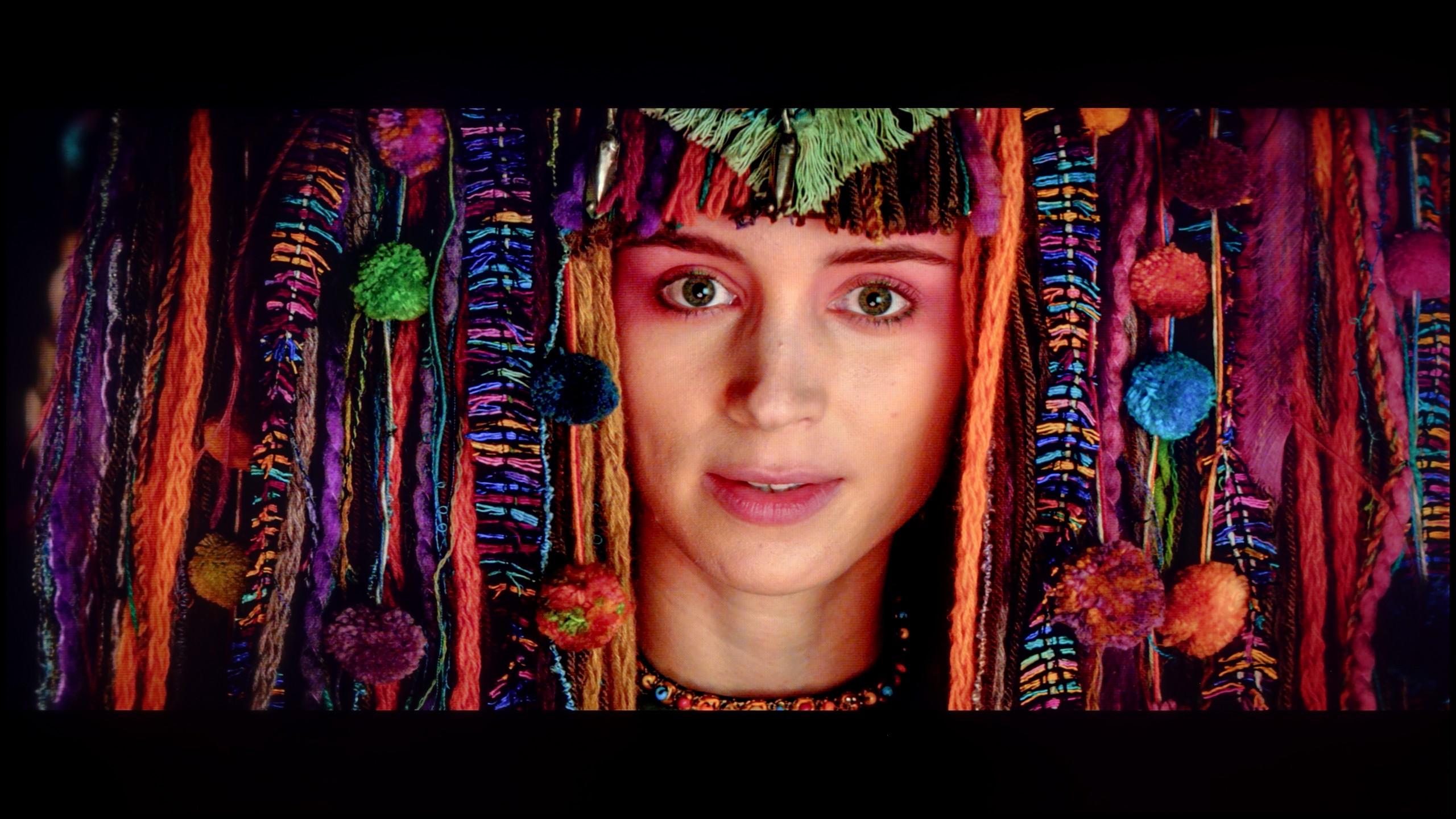
The film mode after calibration looks significantly better than the one you can see when taken out of the box. Samsung offers an advanced range of calibration tools in its televisions. Among them are 2- and 20-point greyscale adjustment and CMS (Colour Management System). Both in HDR and SDR mode, the white balance has improved significantly, although there are minor errors at the end of the graph in the case of HDR content. The contrast has also been greatly improved, and the gamma curve responsible for SDR shows better results. However, when it comes to HDR, the EOTF curve in the television seems to be at an ideal level at first glance. Yet, when we delve deeper and enable the EOTF graph while watching films, we may notice that all the lines of the curve are above the reference line. One could even say that the television is "cheating" when playing film materials. Such a situation, where the EOTF curve is above the reference line, makes the screen – although it may seem brighter, which some users may find attractive – lose detail in the darker parts of the image. In practice, this means that in scenes with a lot of shadows or dark elements, the television is unable to accurately render the details that should be visible.
After conducting a thorough calibration, it was possible to bring most of the image parameters to a really good level. The white balance in both SDR and HDR is nearly perfect – the picture is natural, neutral and devoid of the previously noticeable redness. The colours have gained depth, and the overall visual reception has become more pleasant and cohesive. It was also possible to partially master the brightness management, which in the factory version could be problematic. The EOTF chart shows that the television performs significantly better with brightness after calibration – there is no longer excessive dimming of certain elements. In films, it can still be noticed that the QN80F has a tendency to slightly brighten the smallest, light details – however, this is the effect of the device's design and the limited number of dimming zones. In short: not everything can be overcome, but what could be has been improved. After calibration, the QN80F makes a really good impression; it simply looks more mature and professional.
Smoothness of tonal transitions
8.8/10
9/10





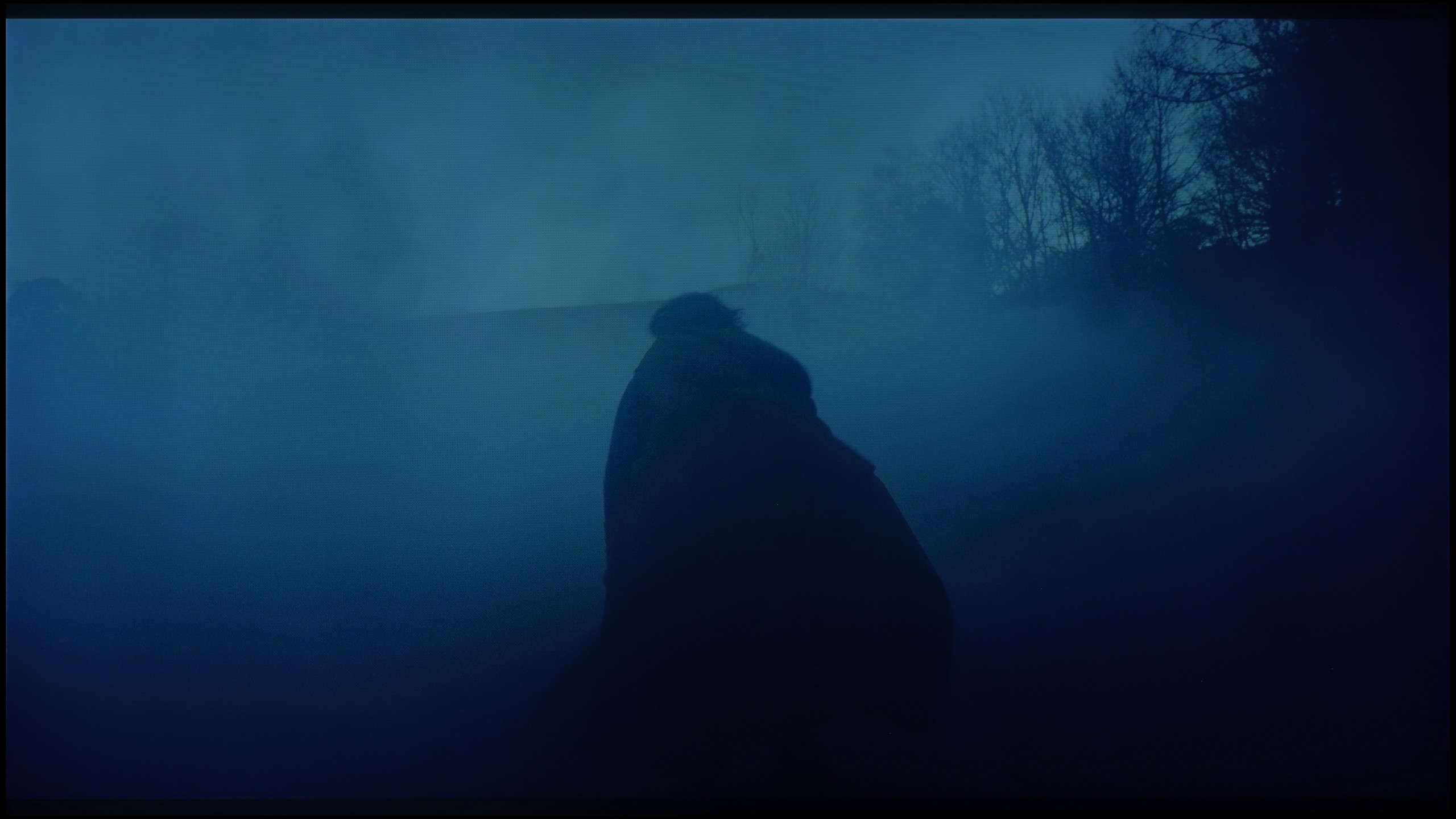

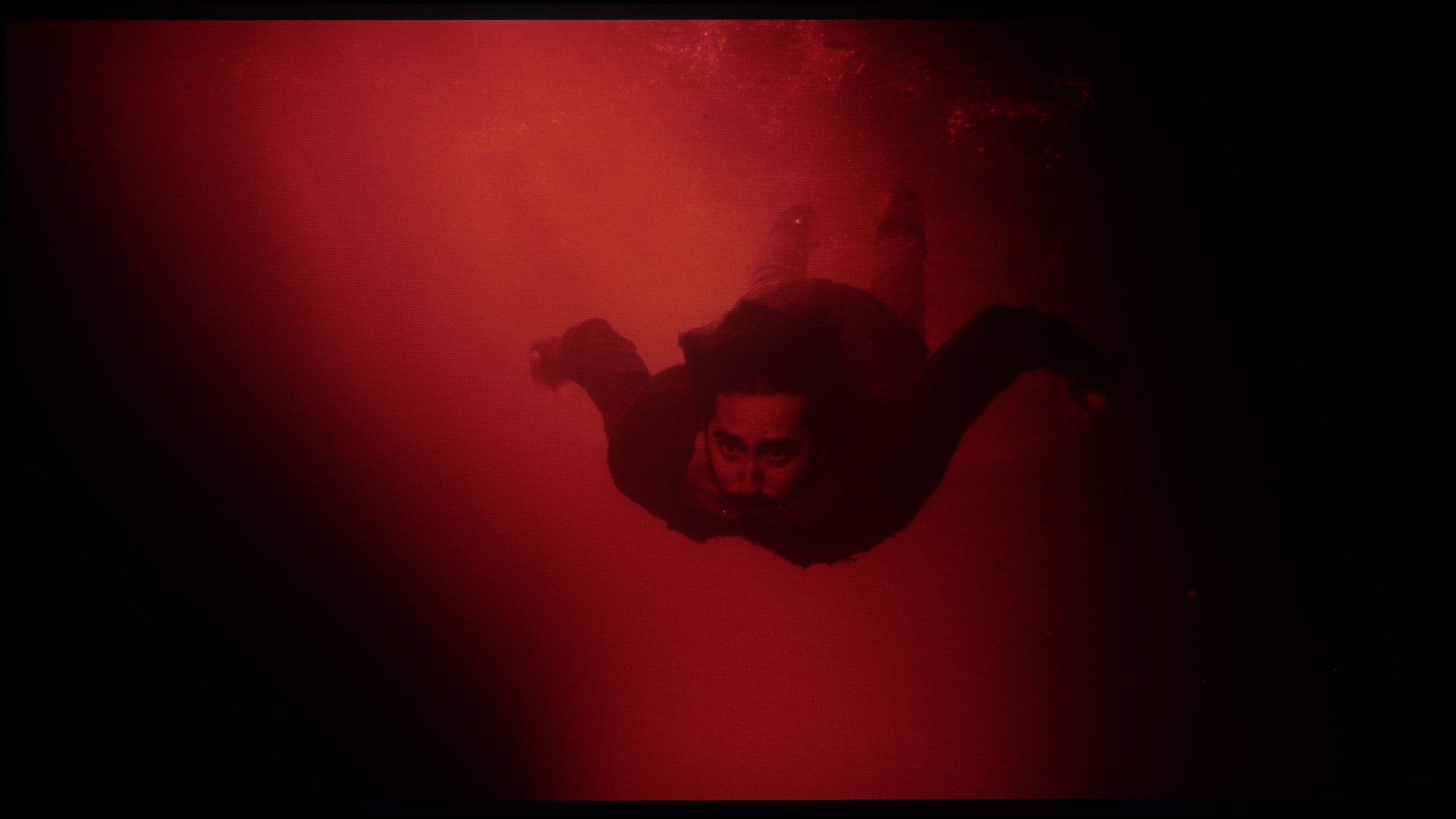




The tonal gradation in the Samsung Q80D television is at an excellent level and can be considered one of its stronger points. Even in the most demanding scenes from the films we tested, it performs exceptionally well. Any potential issues with smoothing transitions in colours are minimal and subtle. The average viewer will most likely not notice them, which translates to an overall positive visual experience in everyday use.
In this respect, the QN80F truly impresses. The transitions between colours are smooth, nothing is torn, and there are no annoying stripes in the sky or strange blotches in the shadows. Film scenes in darker tones performed particularly well – and this is where most televisions tend to struggle. If one is very determined, they may notice slight banding in the brightest sections, but that is really stretching for an issue. In everyday viewing, no one should have a problem with this. To put it plainly: the tonal transitions are so good that one can forget about them – and simply enjoy the film.
Image scaling and smoothness of tonal transitions
7/10
7/10
Smooth transition function


Image without overscan on the SD signal

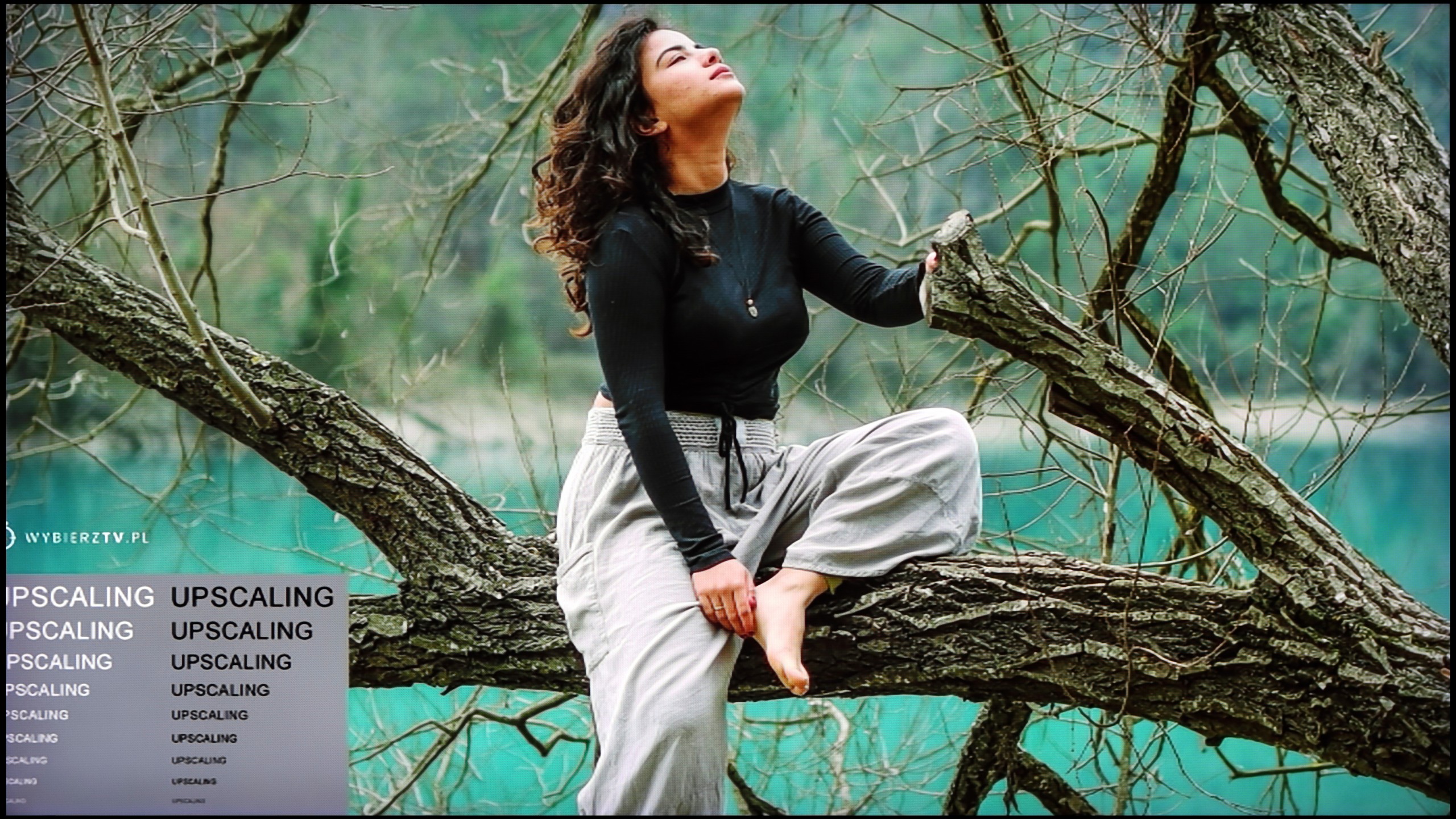
Samsung Q80D performs very well with low-quality materials. The noise reduction works on the principle of gentle grading, making it very effective in smoothing out unwanted image disturbances. Unfortunately, this same effectiveness also causes elements that should not be smoothed, such as film grain, to become blurred. For those who value a pliable, smoothed image more, this can be seen as a significant advantage, especially for lower-quality content.
When it comes to image scaling, Samsung Q80D stands out positively in this aspect, significantly enhancing viewing comfort. The television handles the conversion of lower-resolution materials well, improving their quality and detail. For example, in the attached image with the model, there are no visible artifacts or excessive fraying of branches, which attests to the advanced image processing technology.
If, while watching lower quality materials – for example from YouTube – we notice strange colour transitions or unwanted artefacts, it's worth checking the settings and turning on the noise reduction feature. In our opinion, the best setting is at “medium” – it effectively smooths out problematic colour transitions while not blurring the entire image too much. However, one must know this: this option tends to remove film grain. If someone cares about preserving this effect (e.g. in older films), it’s better to simply turn it off – regardless of the level, the grain always disappears.
When it comes to resolution scaling (or so-called upscaling), Samsung – as usual – performs very well in this area. The QN80F may not compete with top models costing tens of thousands, but for its price class, it really does impress. Materials of very low quality (e.g. from SD television or older video files) are noticeably improved and look surprisingly decent. The only noticeable drawback is the typical Samsung issue with overscan – that is, slight cropping of the image edges in very low resolutions, e.g. 576p.
Blur and motion smoothness
7.3/10
7.5/10

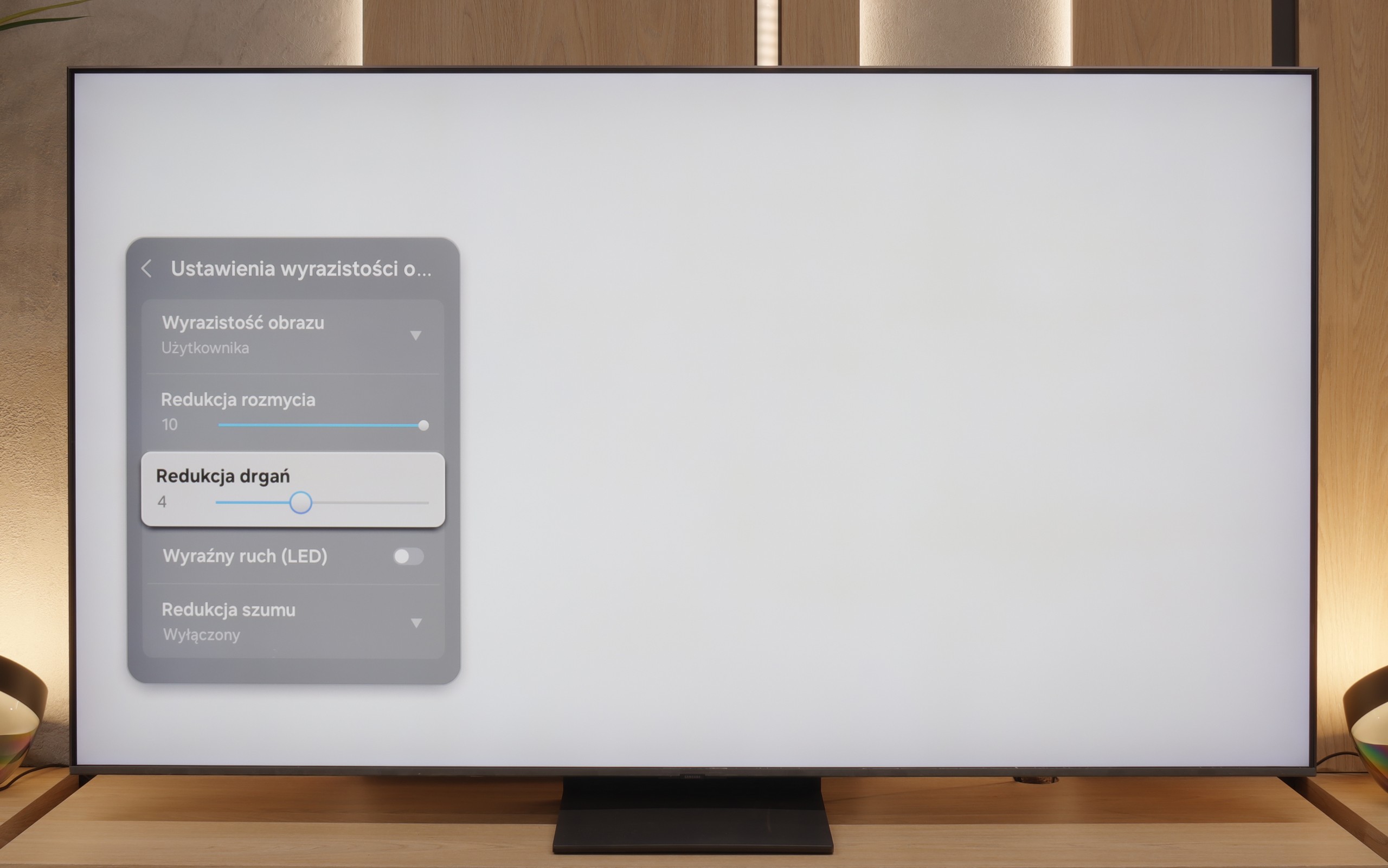
Blur (native resolution, maximum refresh rate):



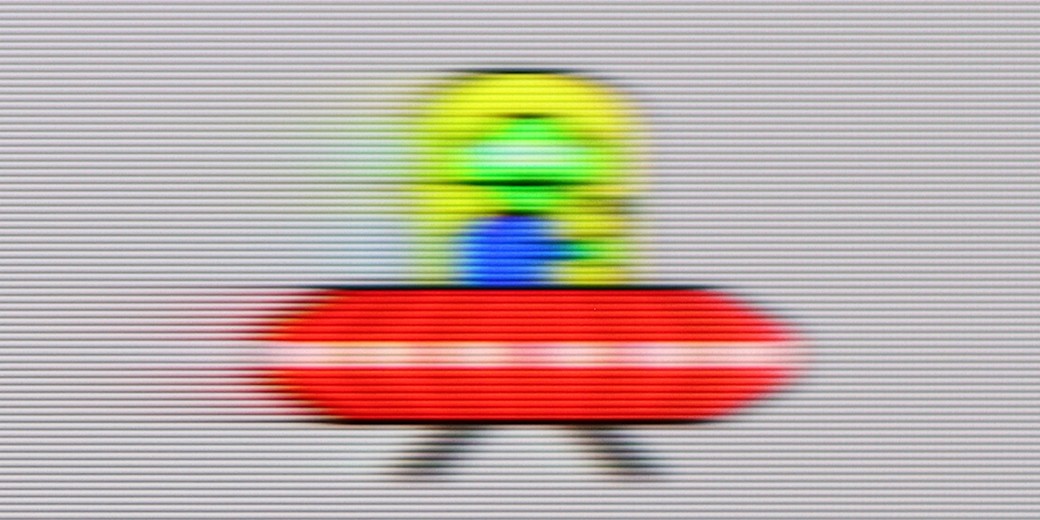
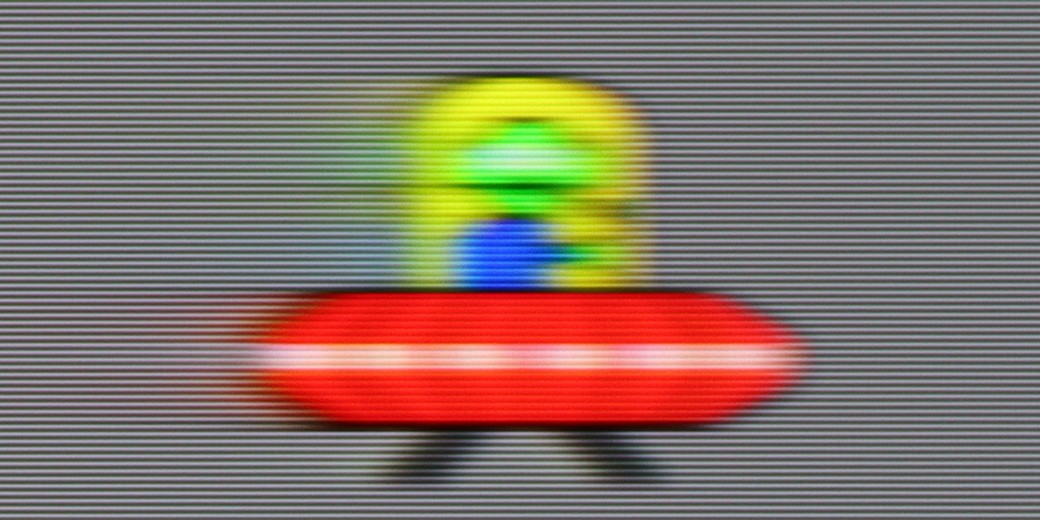
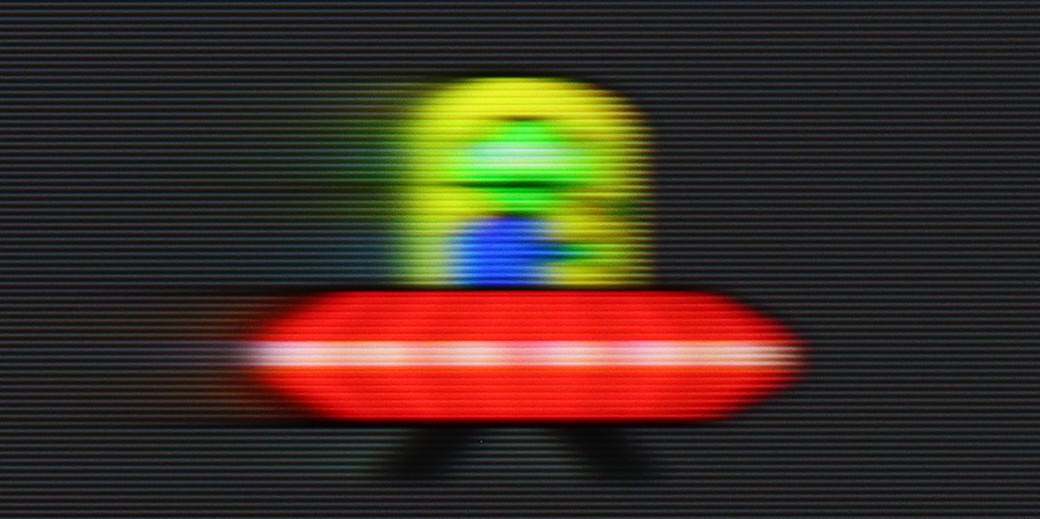
Blur (BFI function enabled):
Image flickers in this mode



Image flickers in this mode

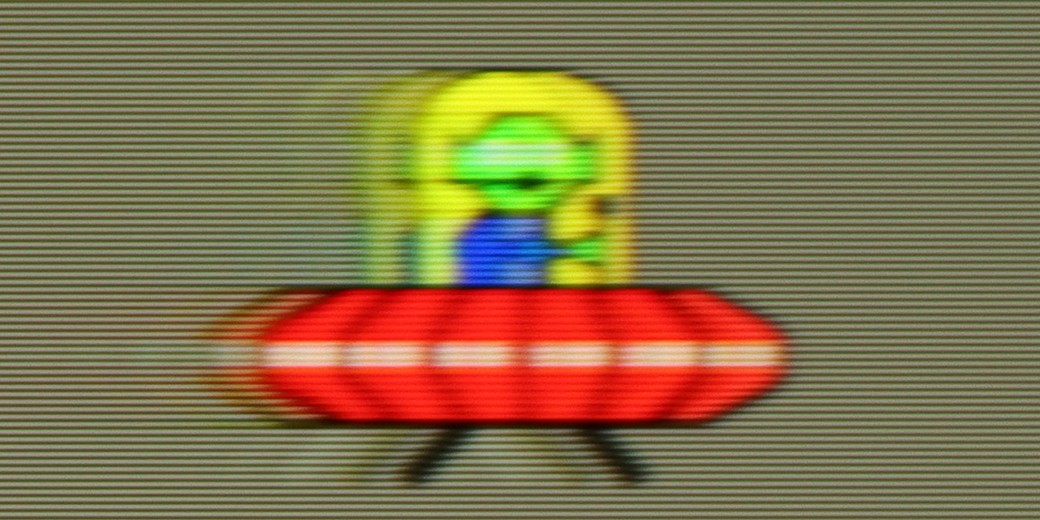
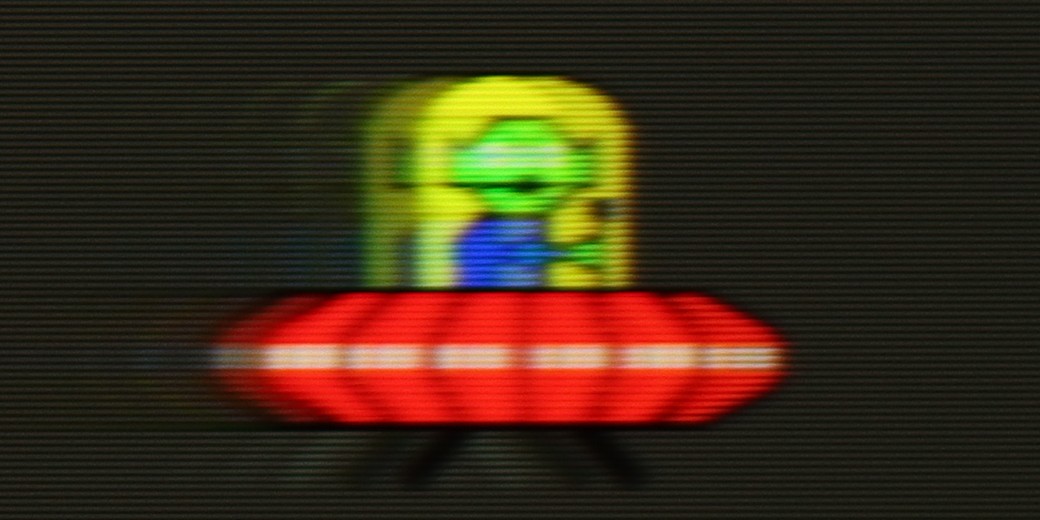
The Samsung Q80D television stands out very positively in terms of motion fluidity and motion blur reduction, primarily due to the applied 120Hz panel and above-average response time of the panel. Users have two options for adjusting fluidity: "Motion Smoothing," which allows for adjustment of smoothness on a 10-point scale, and "Blur Reduction," particularly effective at higher refresh rates, improving the sharpness of rapidly moving objects. In the UFO test, no motion blur is visible behind the moving object, and the image is not cloned forward, indicating a lack of overshoot effect.
QN80F is truly a "fast" television. The applied panel offers a refresh rate of up to 144 Hz, which in practice means that the screen keeps up with the action – whether we're watching a film, playing games, or browsing dynamic content online. The image doesn’t stutter, isn’t excessively smeared, and overall looks simply smooth and pleasing to the eye. Of course, the manufacturer hasn’t forgotten about cinema fans – in the settings, we’ll find an option to adjust motion smoothness, allowing us to tailor the effect to our personal preferences. We can maintain a more "framey" appearance (for those who enjoy the classic cinematic vibe) or ramp up the smoothness to a higher level for a theatrical smoothing effect. Importantly, the choice is ours. Watching films and playing on the QN80F is simply a delight.
Console compatibility and gaming features
9.5/10
8.2/10
- ALLM
- VRR
- VRR range48 - 120Hz48 - 144Hz
- Dolby Vision Game Mode
- Correct implementation of HGIG
- 1080p@120Hz
- 1440p@120Hz
- 4K@120Hz
- Game bar

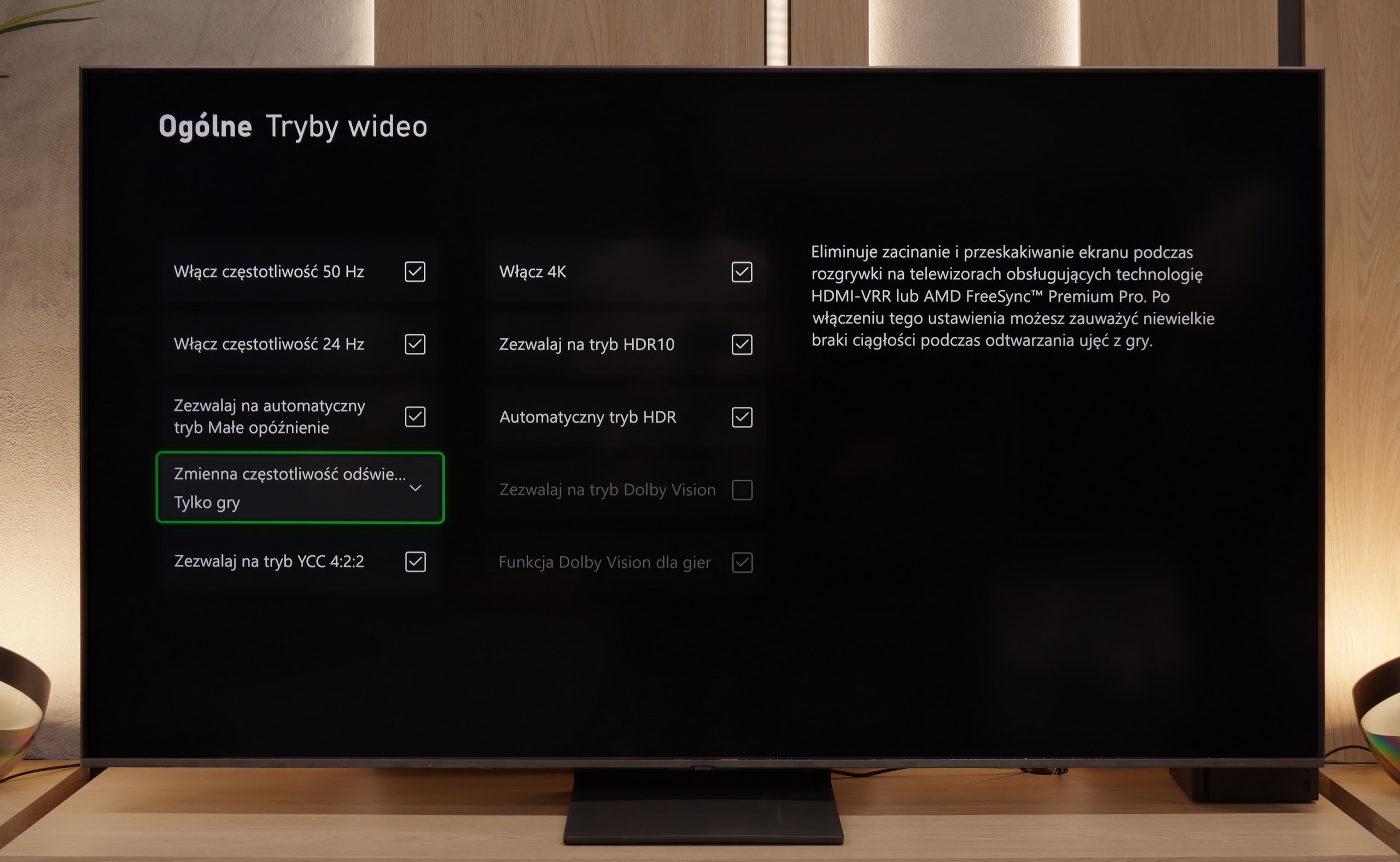



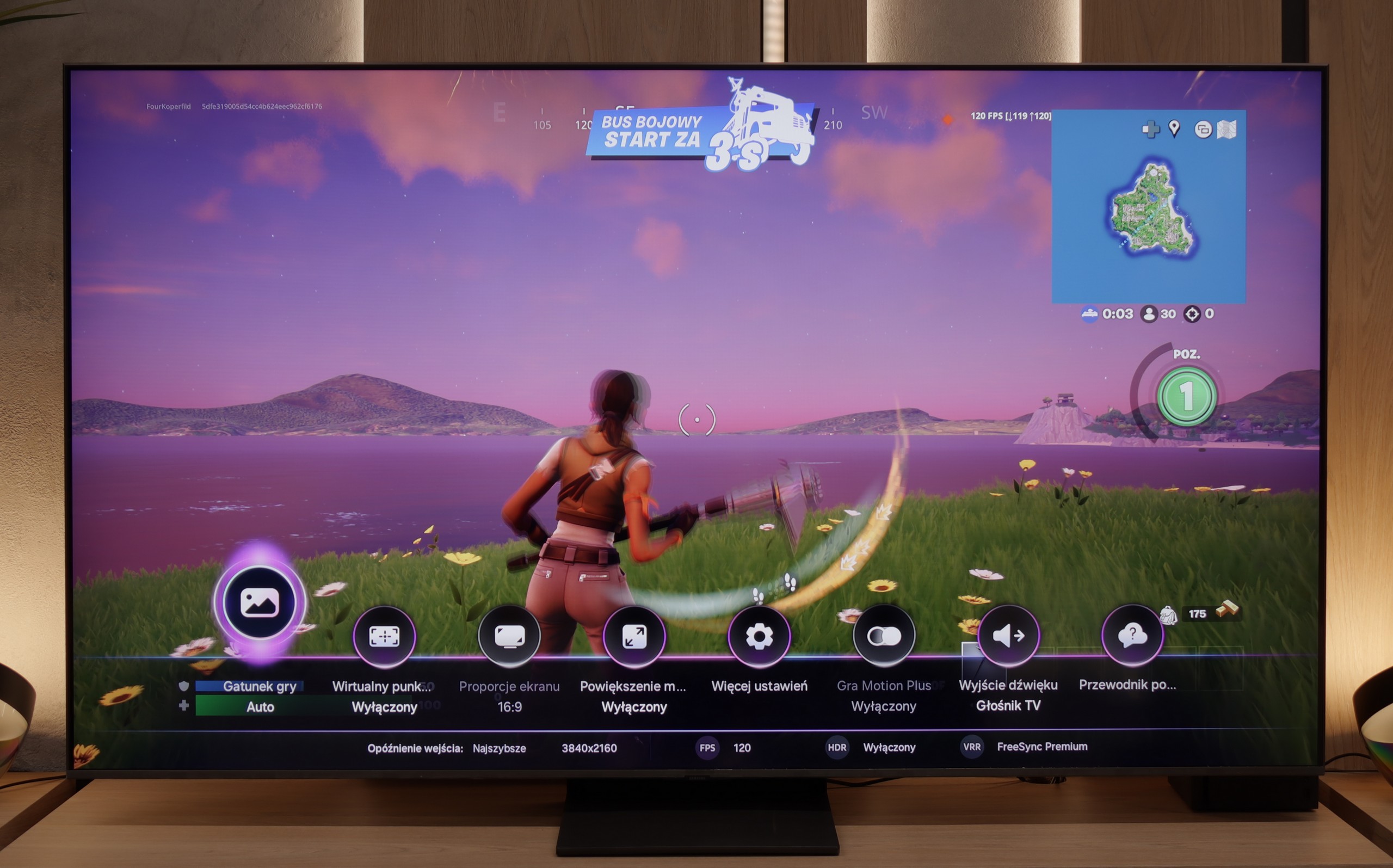

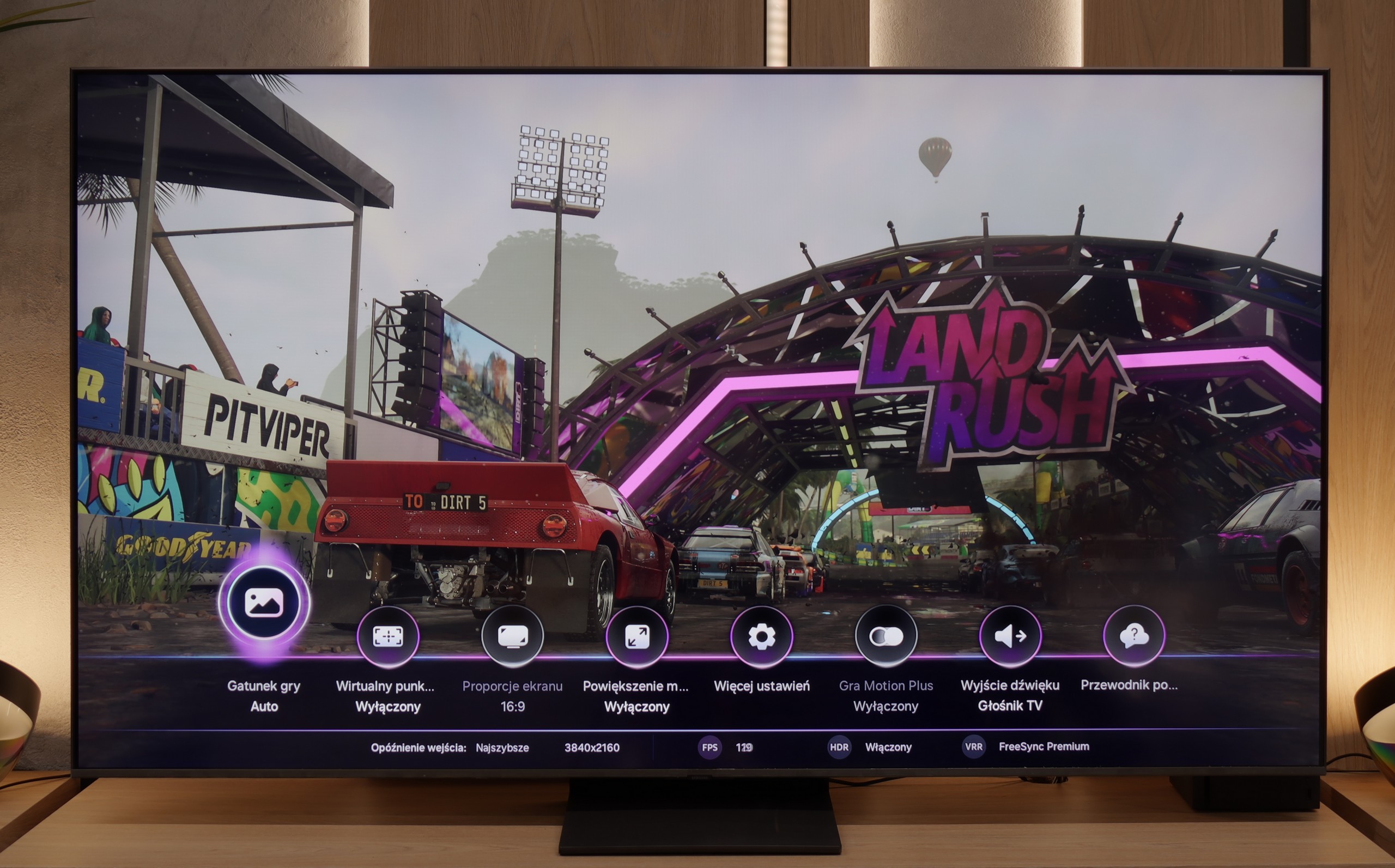
The Samsung Q80D television is a true gem for gamers. It is equipped with four HDMI 2.1 ports, which is a rarity, especially in this price range. This allows users to enjoy features such as ALLM (Auto Low Latency Mode), VRR (Variable Refresh Rate), and 120Hz in 4K resolution. These features ensure smoothness and responsiveness of the image, which is a key aspect during dynamic gameplay. The television also supports HGIG (HDR Gaming Interest Group), enabling optimal display of HDR content in games. Additionally, it is equipped with a Game Bar that allows quick access to gaming settings. Users of Nvidia graphics cards will also be pleased thanks to the implementation of G-Sync. This feature eliminates stuttering and screen tearing. The only downside is the lack of support for Dolby Vision mode, which may be disappointing for users looking for this HDR format. It is also worth mentioning that since 2022, thanks to a partnership with Microsoft, Samsung televisions offer the Xbox Game Pass application, allowing for cloud gaming. This is an additional advantage for gamers who want to access a wide library of games without the need for a console.
The Samsung QN80F is a television that delivers on almost every front when it comes to gaming. We have a 144 Hz panel, four full-fledged HDMI 2.1 ports, support for gamers in the form of variable refresh rate (VRR), automatic game mode (ALLM), and even one of the best-designed game bars on the market. The cherry on top is the motion smoother, which – uniquely in the world – works in games without significantly increasing input lag. Sounds like an almost perfect television for gamers? And indeed, it is almost that.
As usual, Samsung does not support Dolby Vision in games, but that no longer surprises anyone. However, it is considerably more surprising that... the HGIG function has disappeared – that is, the system that allows the console (e.g., PlayStation 5 or Xbox Series X) to precisely match HDR tone mapping to the television’s capabilities. In the latest firmware update for the 2025 models, this option has simply vanished. This looks more like a mistake than a deliberate move, but it must be noted fairly that as of the date of writing this review, the HGIG function is simply not available.
And it is precisely because of this one missing feature that the QN80F transforms from an almost perfect gaming television into a “nearly” perfect device. It’s a shame – because everything else suggested that Samsung could once again set the bar very high in this generation.
Input lag
9.8/10
9.8/10
SDR
HDR
Dolby Vision
There isn't much to say here, the input lag at this level is simply remarkable. It's hard to achieve a better result that will satisfy gamers! The television performed excellently at every tested resolution and refresh rate, both in SDR and HDR.
The QN80F does not disappoint when it comes to response time. The input lag for 120 Hz content drops below 10 ms, which can be considered an almost perfect result – it is hard to expect more in this class of TVs. Gaming is smooth, responsive, and without delays that could annoy even the most sensitive players. For 60 Hz materials, the lag is higher, around 19 ms, but this is a completely natural phenomenon and still falls within comfortable limits.
Compatibility with PC
7.6/10
8.8/10

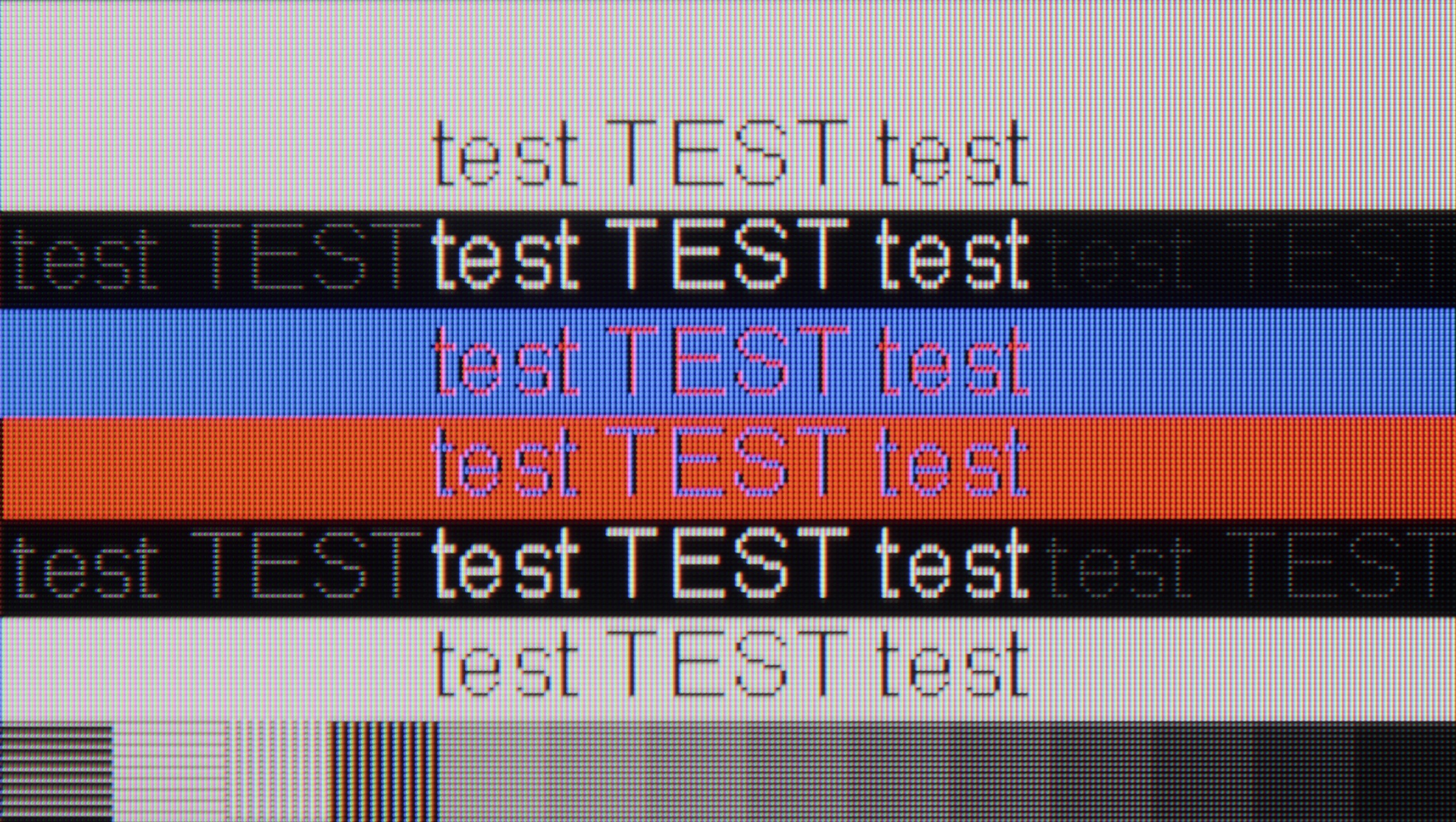
Samsung Q80D works well as a computer monitor. Thanks to support for 4:4:4 chroma (which only functions in "Game" mode), text on the screen is clear and legible, which is very important for those who want to work on such a television with text documents or spreadsheets. One of the biggest advantages of this model is its exceptionally low input lag in "PC" mode, which is just 9 ms. This is a reference-level result that ensures smoothness and responsiveness, which is crucial for both gamers and those involved in video editing. The only issue we can point out is that there is a certain problem with displaying fonts on dark backgrounds. When we zoom in on the tested font image, we notice that the horizontal lines are darker compared to the vertical ones. This means that the sub-pixels in the television do not fully illuminate in this case. This could be due to an oversight by the manufacturer regarding the optimisation of the algorithm responsible for displaying thin lines, which affects the quality of details in displaying text on dark backgrounds. Nevertheless, Samsung Q80D is a very good choice as a PC monitor.
Playing on the QN80F with a connected computer is pure pleasure. The television effortlessly works with NVIDIA graphics cards (thanks to G-Sync support) and AMD (thanks to FreeSync Premium), and the 144 Hz refresh rate only enhances comfort during dynamic gameplay. Everything works immediately, without unnecessary fiddling with settings – exactly as it should.
When it comes to work, it is also very good. The readability of fonts is at a high level, and texts appear sharp and clear. With very thin horizontal lines, some minor imperfections in shading can be noticed, but honestly – you really have to look closely. Unless, like us, you sometimes enjoy looking at the screen with a magnifying glass… then you might spot something 😉.
Viewing angles
3/10
3.1/10
Samsung Q80D, equipped with a VA panel, unfortunately does not perform well in terms of viewing angles. When we watch the screen at a 45-degree angle, there is a noticeable loss of brightness. The image becomes less sharp, which can be problematic if we plan to watch television from different spots in the room. However, the VA panel has its advantages. When looking directly at the screen, black levels are deep and well-saturated. Furthermore, even at an angle, dark colours maintain their depth, which is a rarity for this type of panel.
QN80F, like most TVs with a VA panel, does not impress in terms of viewing angles. All it takes is a slight lean to the side to notice a significant drop in brightness and lost colour saturation. The picture loses its "depth" and "vibrancy", and darker scenes may appear slightly washed out. However, this is a typical characteristic of VA panels, which provide significantly better native contrast than IPS panels in return. In short: something for something. If you are sitting directly in front of the screen, there will be no problem. But when watching together in a larger group, it is worth keeping this in mind.
TV efficiency during daytime
6/10
6.6/10

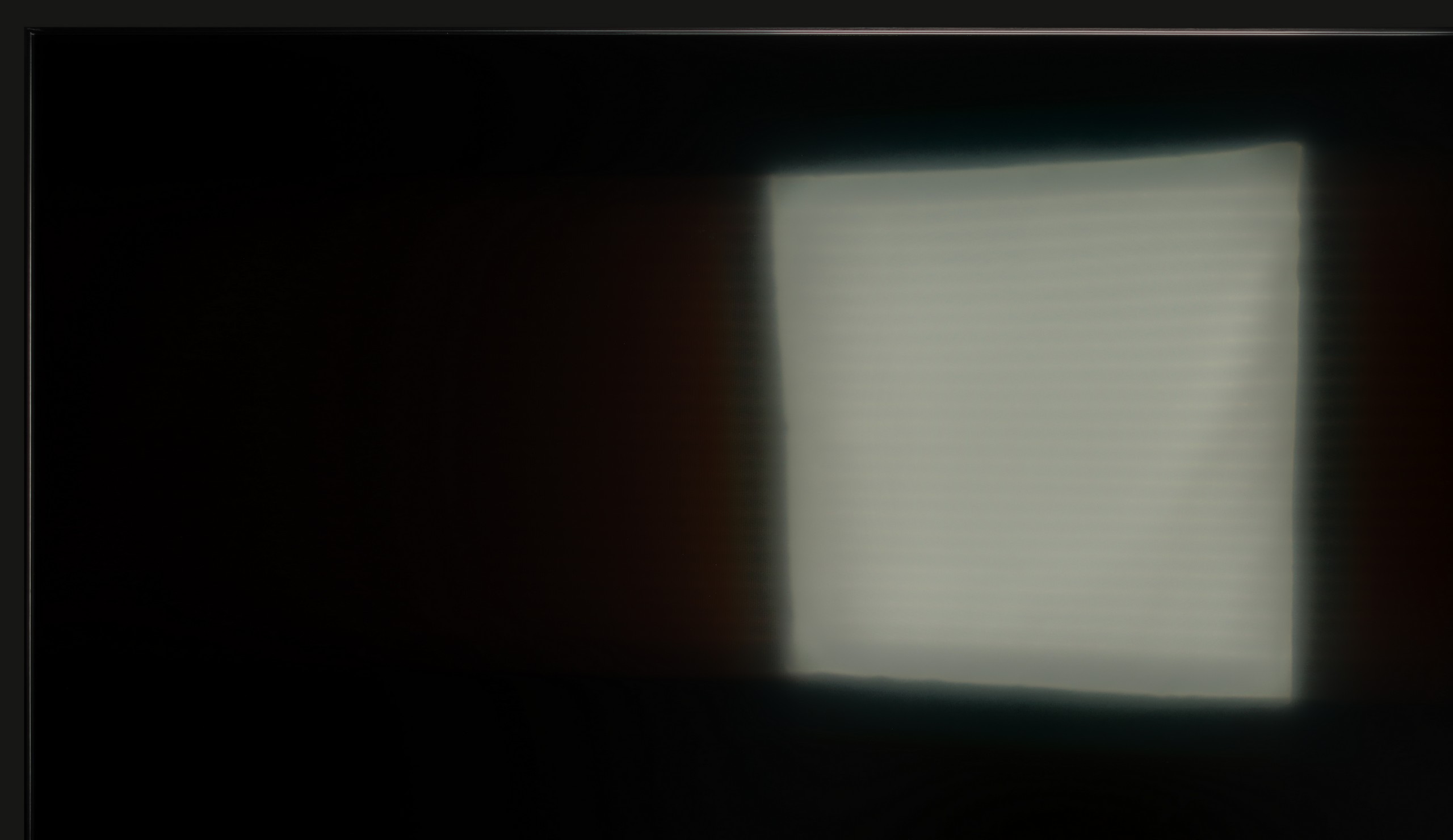


Matrix brightness
Average luminance SDR
Samsung QN80F: 543 cd/m2
Samsung QLED Q80D: 550 cd/m2
The Samsung Q80D television stands out with very good brightness, averaging 550 nits, which is an impressive result, especially since it maintains this brightness across the entire screen surface. This makes the image clear and well-visible even in bright rooms, which is a big plus when watching television during the day. However, despite the satin coating of the panel, the television struggles somewhat with reducing reflections. In bright lighting conditions, unwanted glares can appear, which may disrupt viewing comfort. This is particularly noticeable when there are light sources in the room directly falling on the screen.
The QN80F is truly a bright television. The average brightness in SDR content is around 550 nits, regardless of the scene, which in practice means that you can comfortably watch content even in a well-lit room – and you don’t have to close the blinds every time you turn on a film. The new satin coating on the panel also deserves praise, as it performs significantly better at reducing reflections compared to last year’s QN80D. Glare is less bothersome, and the screen maintains readability in various lighting conditions. It’s hard to find fault here – the QN80F performs simply excellently during the day.
Details about the matrix
Subpixel Structure:

Panel uniformity:

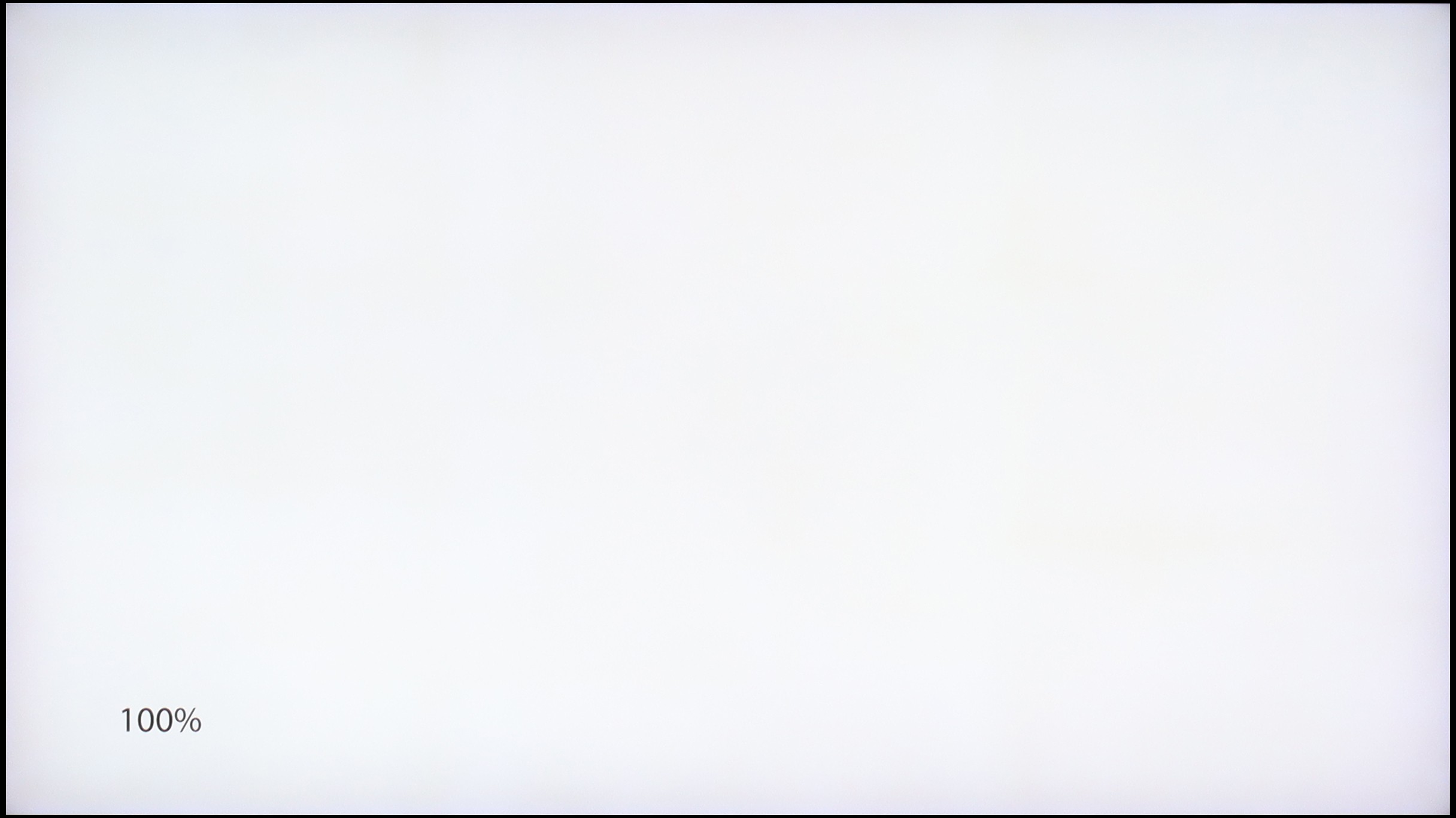
Samsung QLED Q80D
Samsung QN80F
TV features
7.7/10
7.5/10
- HDMI inputs0 x HDMI 2.0, 4 x HDMI 2.1 48Gbps0 x HDMI 2.0, 4 x HDMI 2.1 48Gbps
- OutputsToslink (Optical audio), eARC (HDMI), ARC (HDMI)Toslink (Optical audio), eARC (HDMI), ARC (HDMI)
- Network InterfacesWi-Fi 2.4GHz, Wi-Fi 5GHz, Ethernet (LAN) 100MbpsWi-Fi 2.4GHz, Wi-Fi 5GHz, Ethernet (LAN) 100Mbps
- TV receptionDVB-T, DVB-T2, DVB-S, DVB-S2, DVB-CDVB-T, DVB-T2, DVB-S, DVB-S2, DVB-C
Classic features:
- Recording to USB (terrestrial TV)
- Recording programming
- Picture in Picture (PiP)
- RF remote control (no need to aim at the screen)
- Backlit remote control
- Teletext
- Audio only mode
- Possibility to connect Bluetooth headphones to the TV
- Possibility to simultaneously use Bluetooth headphones and the TV speaker
Smart features:
- AirPlay
- Screen mirroring (Windows Miracast)
- Wyszukiwanie głosowe
- Voice search in native language
- Ability to connect a keyboard and mouse


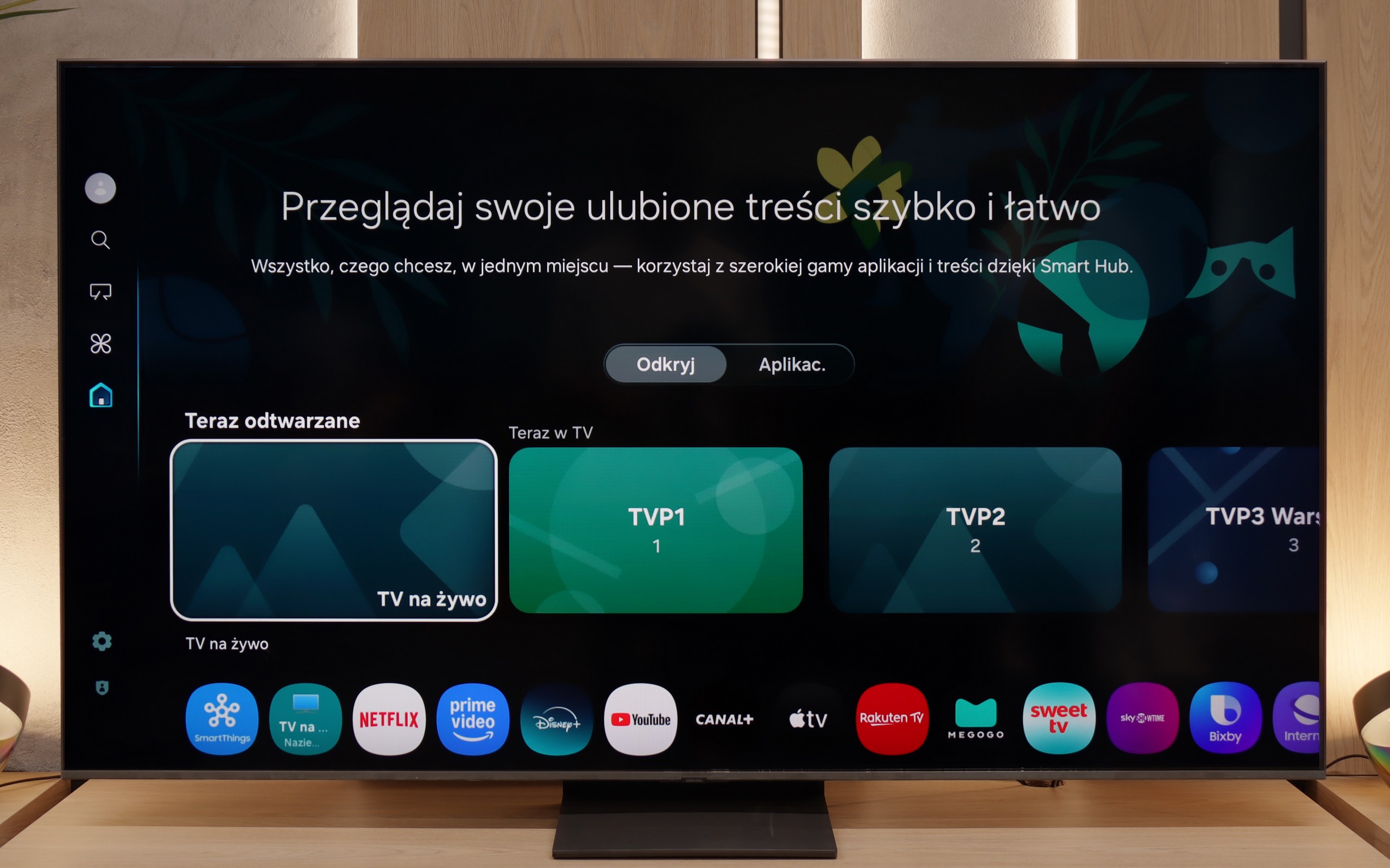
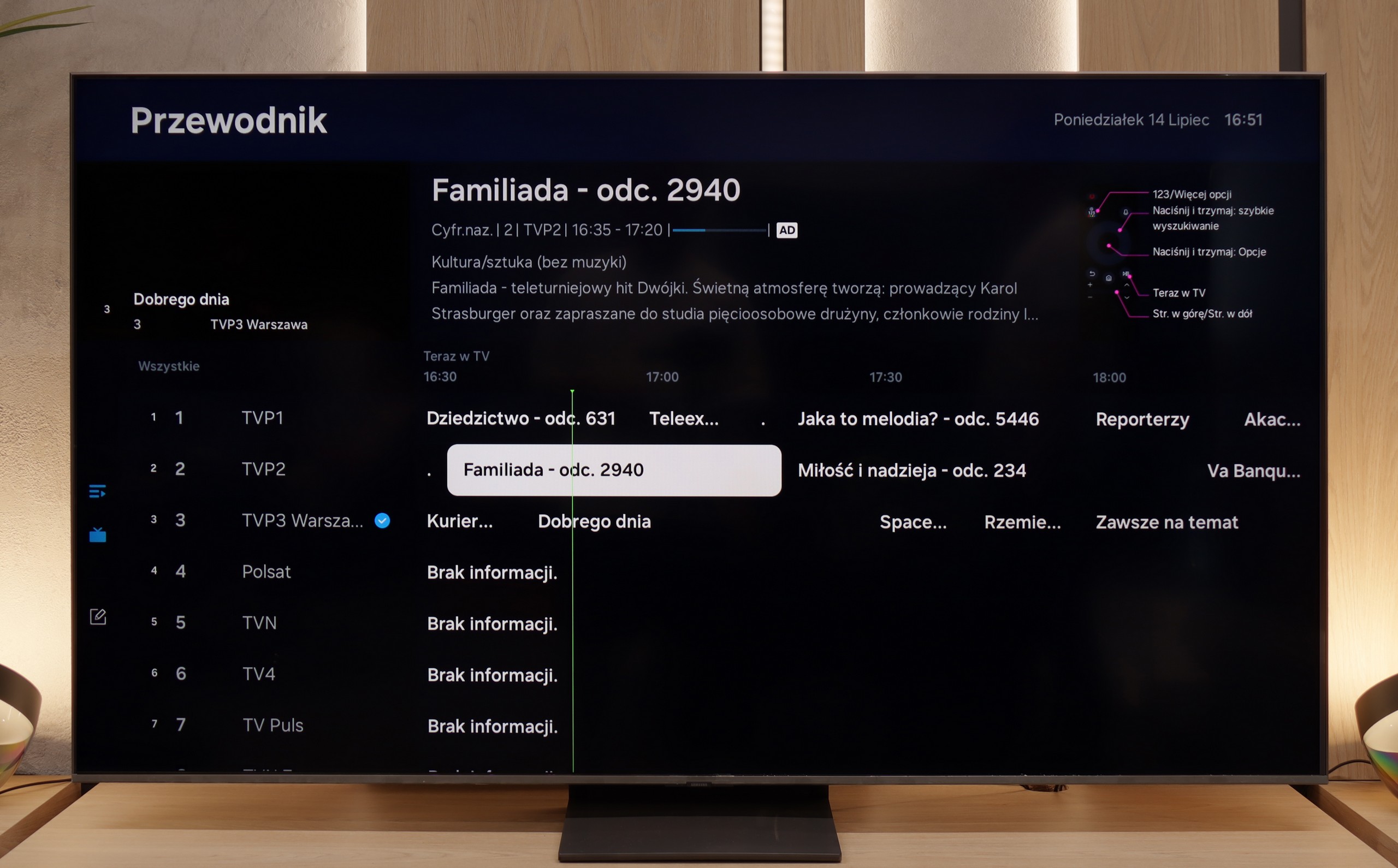
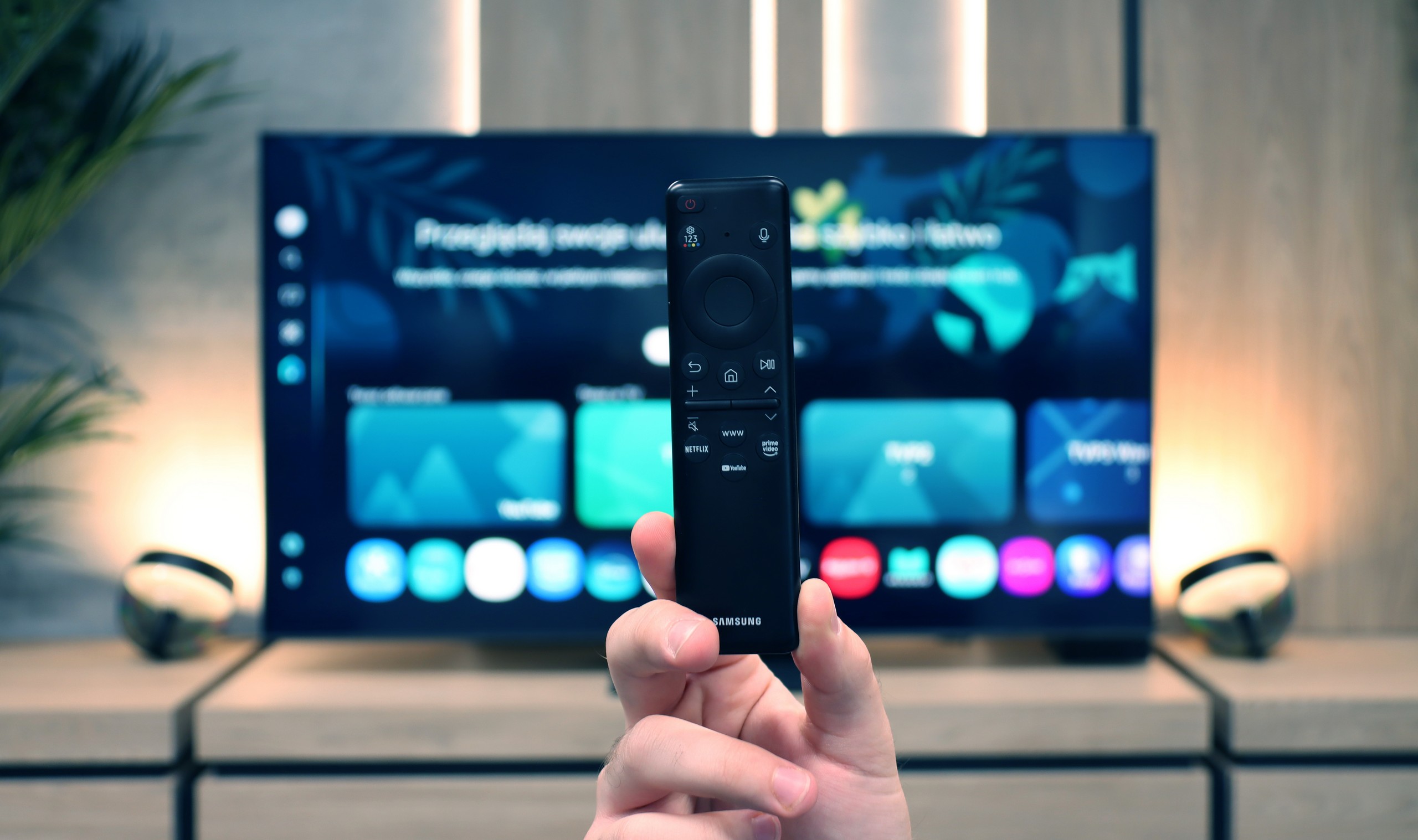
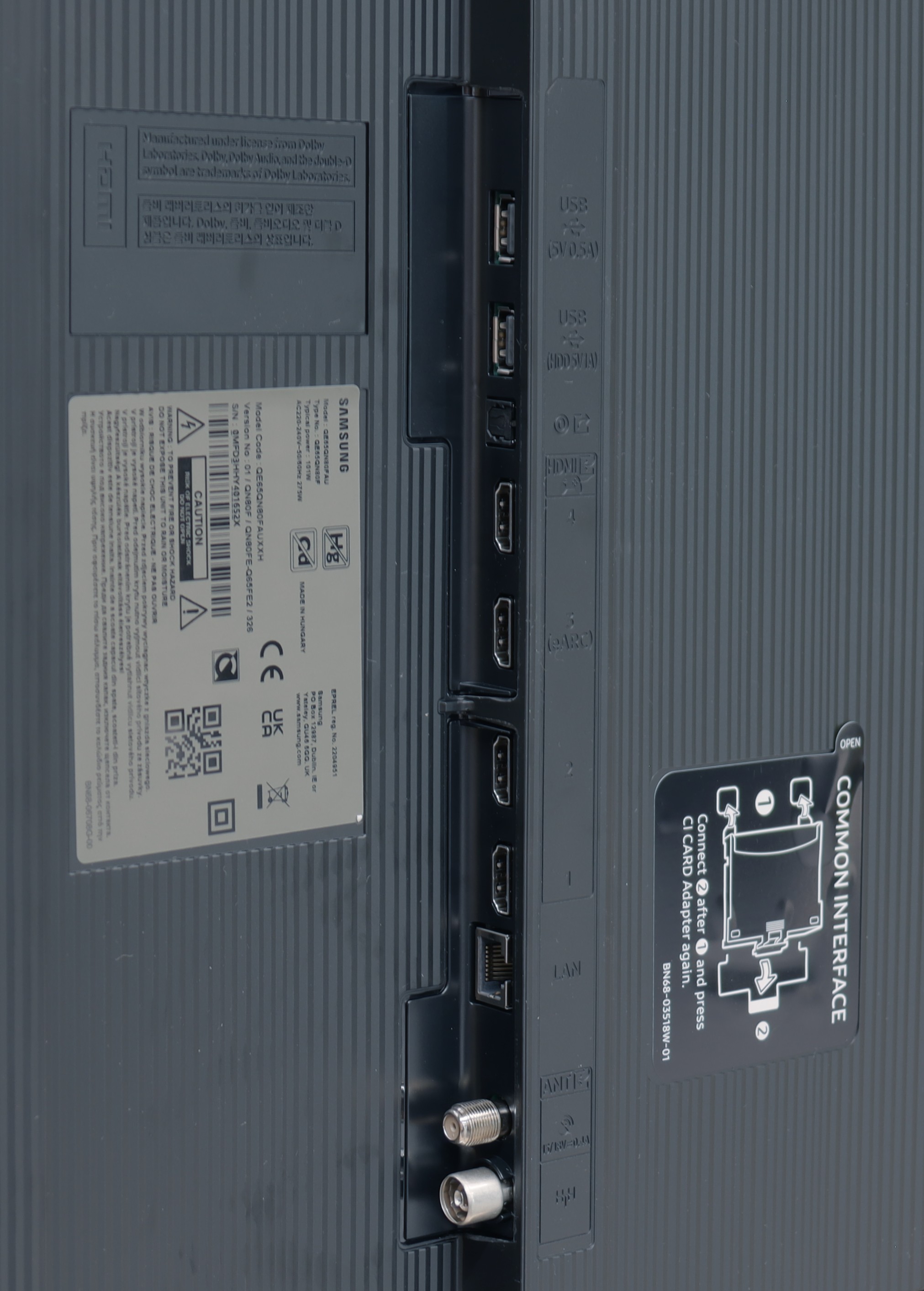
The Samsung Q80D television offers a range of features that significantly enhance user comfort. The Tizen system is an advanced platform that provides users with an intuitive and smooth experience. Thanks to its user-friendly interface, navigation through apps and settings is quick and easy. Tizen supports a rich set of applications, including popular streaming services, allowing access to a wide variety of entertainment content without the need for additional devices, with the novelty for 2024 being support for the Polish language. It is also worth mentioning the solar remote, which is not only eco-friendly but also convenient for everyday use. The solar cell remote can easily control other devices such as home cinemas, decoders (e.g. Canal+), or game consoles, which poses quite a challenge for other manufacturers. Returning to the console, Samsung Q80D offers several features that may appeal to gamers. Above all, the television supports VRR (Variable Refresh Rate) technology, which allows for smoother game displays, eliminating issues like tearing and stuttering. Additionally, due to its low input lag, gaming reactions are quick and precise. The Samsung Q80D is also equipped with a Game Bar function, which allows quick access to key gaming settings without the need to exit the game. From this level, we can check and adjust parameters such as VRR, input lag, frames per second (FPS), as well as screen ratios or sound settings. This enables gamers to continuously optimise their experiences by adjusting settings to the current gameplay needs. The television supports AirPlay, allowing for easy content streaming from Apple devices, and enables connection to various Bluetooth devices, such as mice or headphones, increasing its versatility. The only downside that can be considered is the lack of support for USB recording and the fact that the Q80D unfortunately does not support the DTS audio format. This means that if we have content encoded in this format, the device will not be able to correctly playback the audio track. This could pose a problem for those using Blu-ray discs or multimedia files that often use DTS to provide high-quality surround sound. To achieve full audio experiences, it may be necessary to use an external player or soundbar that supports this format.
SmartTV QN80F: Tizen
In terms of smart features, the QN80F has nothing to be ashamed of. On the contrary – Tizen is one of the richest operating systems when it comes to functionality. We have voice search, support for AirPlay, Miracast, and all the major streaming platforms at our fingertips. But Samsung's true advantage reveals itself in the smart home – SmartThings. Here you can not only synchronise light bulbs and vacuum robots but also integrate devices from other manufacturers, thanks to support for the Matter standard. And suddenly it turns out that the QN80F can serve as a home command centre. There is just one "but" – Tizen is a closed system, so we may not find a few lesser-known applications. Although in practice it has everything that 99% of users need.
Classic TV features:
When it comes to classic features, it is just as good – well, almost. The QN80F supports picture-in-picture, which is a rarely seen but still useful PiP function. We can easily find the EPG, good old teletext (yes, it works!), and the ability to connect external devices via Bluetooth – whether it's headphones or a soundbar. Unfortunately, there is a lack of the option to record to USB from the built-in tuners. This is a minor setback, especially since the competition at a similar price increasingly offers this feature. It may not be a must-have function, but since everything else works so well, it's a pity that this feature is missing a dot over the i.
Playing files from USB
9.1/10
8.4/10
Supported photo formats:
Maximum photo resolution:

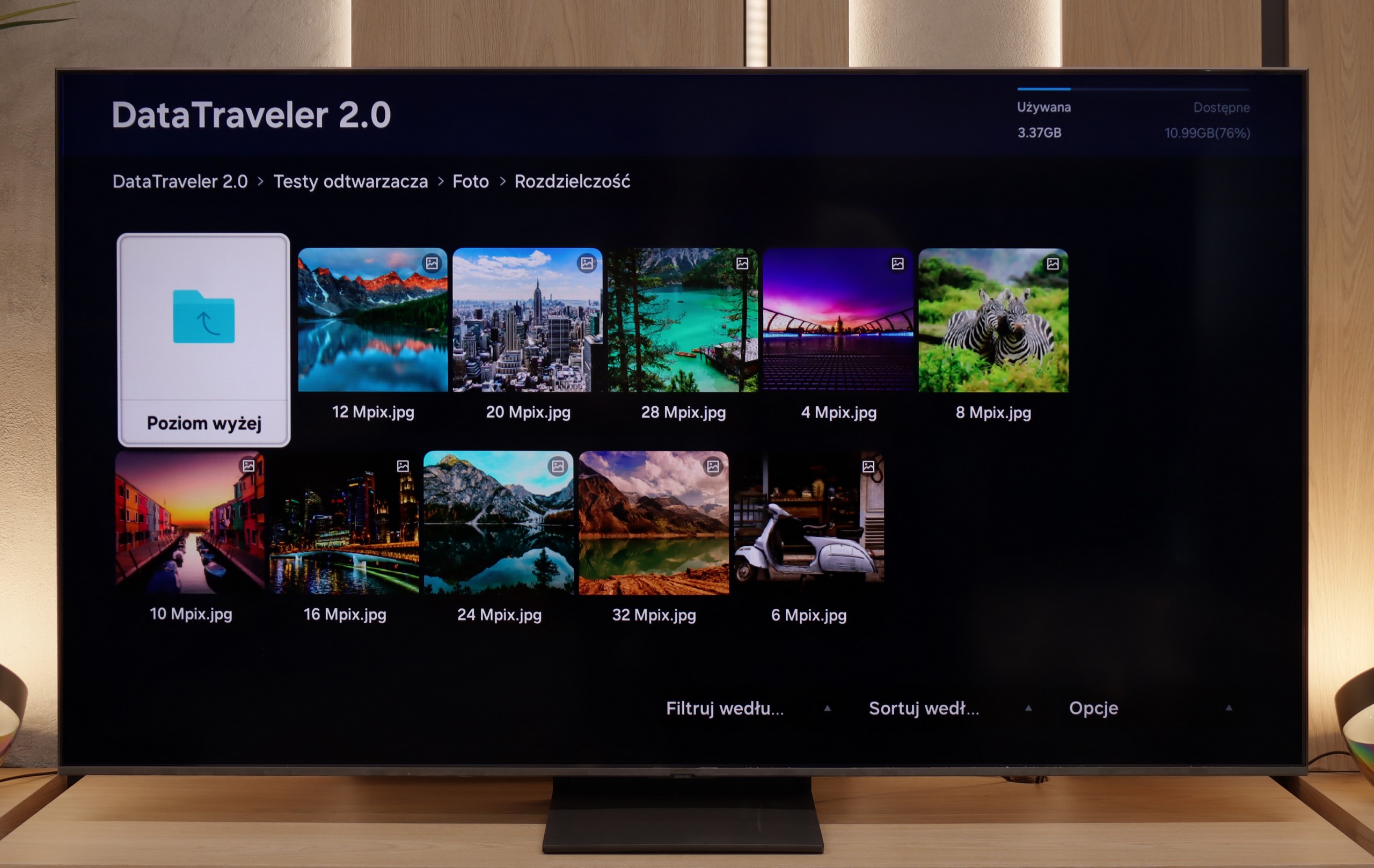
The built-in player in the Samsung Q80D television is definitely one of its strong points. It handles almost all video and audio files we used in our tests exceptionally well. The only exceptions are the Dolby Vision format, which is not surprising, and less popular codecs. Additionally, it is worth noting the support for Polish characters and the ability to customise font colours. On the downside, the television performs somewhat worse with photo formats, as it only supports JPEG from the popular options, lacking support for formats like PNG or Apple HEIC.
The built-in media player in the QN80F handles most popular video formats – from classic MP4 to slightly more demanding containers. It may not be a powerhouse like VLC, but it's perfectly adequate for home use. The situation is less impressive with photographs – here, unfortunately, it's rather modest. Support is mainly limited to the JPG format, but hey, at least that's the most important one 👌. During our tests, there was also a slight issue with subtitles. The QN80F could only handle the simple text format .txt – other, more advanced formats (like .srt or .sub) were unfortunately not recognised.
Apps
8.7/10
8.7/10














































Sound
6.6/10
6.7/10
- Subjective sound quality:6.6/106.7/10
- Dolby Digital Plus 7.1:
- Dolby True HD 7.1:
- Dolby Atmos in Dolby Digital Plus (JOC):
- Dolby Atmos in Dolby True HD:
- DTS:X in DTS-HD MA:
- DTS-HD Master Audio:
The Samsung Q80D television is equipped with a decent audio system boasting 40W power in a 2.2 configuration, providing quite good sound experiences. This system supports all popular Dolby codecs, allowing for the use of advanced audio formats while watching films or playing games. However, it is worth noting one drawback: the television does not support DTS functionality. Nonetheless, this lack can be circumvented by connecting an external audio system, which can significantly enhance sound quality and provide a more immersive audio experience. Additionally, Samsung offers a wide portfolio of soundbars that can be integrated with the television, as well as the Q-Symphony system, which allows for the synchronisation of sound between the television and the soundbar.
For a television of this class, the QN80F sounds surprisingly good. It supports the Dolby Atmos format, which is worth noting, as this is still not a given in many models in this range. Unlike the thinner QN70F, here you can even feel a slight bass – all thanks to the thicker casing, which simply provides more space for the sound to "breathe." It's perfectly adequate for everyday viewing and series, and with the right settings, one can even be tempted to listen to music without the need for external equipment. However – as is often the case with Samsung, there is unfortunately a lack of support for the DTS:X format, so if we are using audio devices that support this format, we will first need to connect them to the amplifier and only then to the television.


